The Power of Power Training: Explosive Moves to Build a Body That Will Last a Lifetime
In the realm of fitness, power training stands as a formidable pillar, offering more than just aesthetic benefits. This dynamic form of exercise not only builds muscular strength and endurance but also significantly improves neuromuscular coordination. By integrating power training into your fitness regimen, you cultivate a body that is not only resilient but also capable of performing at its peak for a lifetime. That's why we've expanded our list, highlighting even more explosive moves that are essential for building a robust, enduring physique.
The Science Behind Power Training
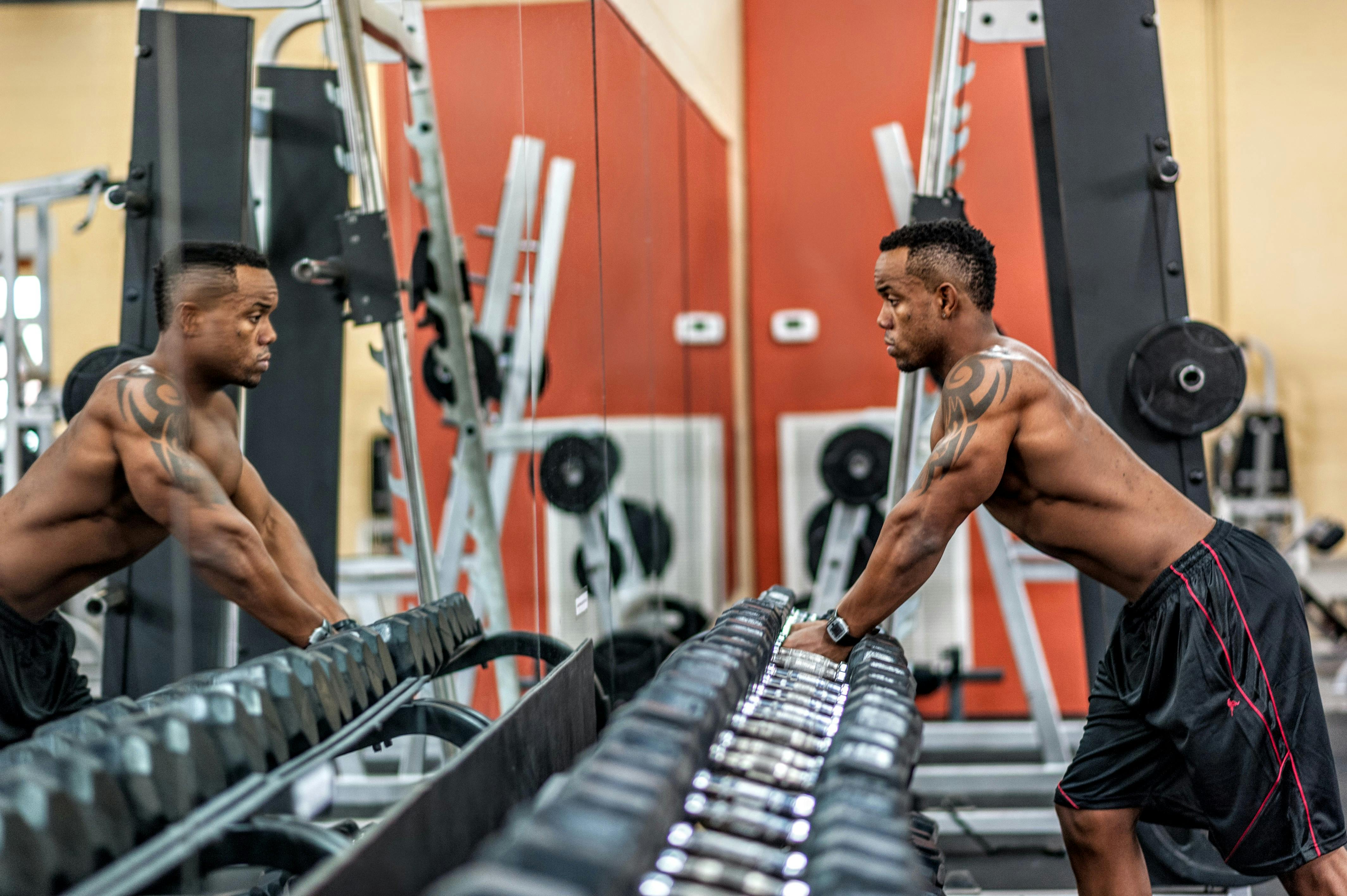
Power training is rooted in the principles of physics and physiology, focusing on the ability to exert maximum force in the shortest time possible. This type of training enhances the fast-twitch muscle fibers, which are crucial for explosive movements. Fast-twitch fibers contract quickly and powerfully, making them indispensable for activities that require speed and strength. Research indicates that power training can significantly improve athletic performance by increasing the rate of force development, which is vital for sports and daily activities alike. Furthermore, it enhances the efficiency of the nervous system, allowing for quicker muscle activation and improved coordination. By understanding the science behind power training, individuals can tailor their workouts to maximize these benefits, ultimately leading to a more powerful and enduring body.
The Benefits of Power Training for Longevity

Engaging in power training offers a multitude of long-term health benefits that contribute to a lifetime of physical well-being. As we age, muscle mass and bone density naturally decline, leading to a higher risk of injuries and chronic conditions such as osteoporosis. Power training combats these effects by stimulating muscle hypertrophy and increasing bone mineral density, thus fortifying the body against age-related degeneration. Additionally, the metabolic boost from power training aids in maintaining a healthy weight, reducing the risk of obesity-related diseases. The aerobic component of explosive movements also improves cardiovascular health, enhancing overall endurance and vitality. By incorporating power training into a regular fitness routine, individuals can enjoy a higher quality of life well into their later years.
Move 1 - The Power of Plyometric Push-Ups
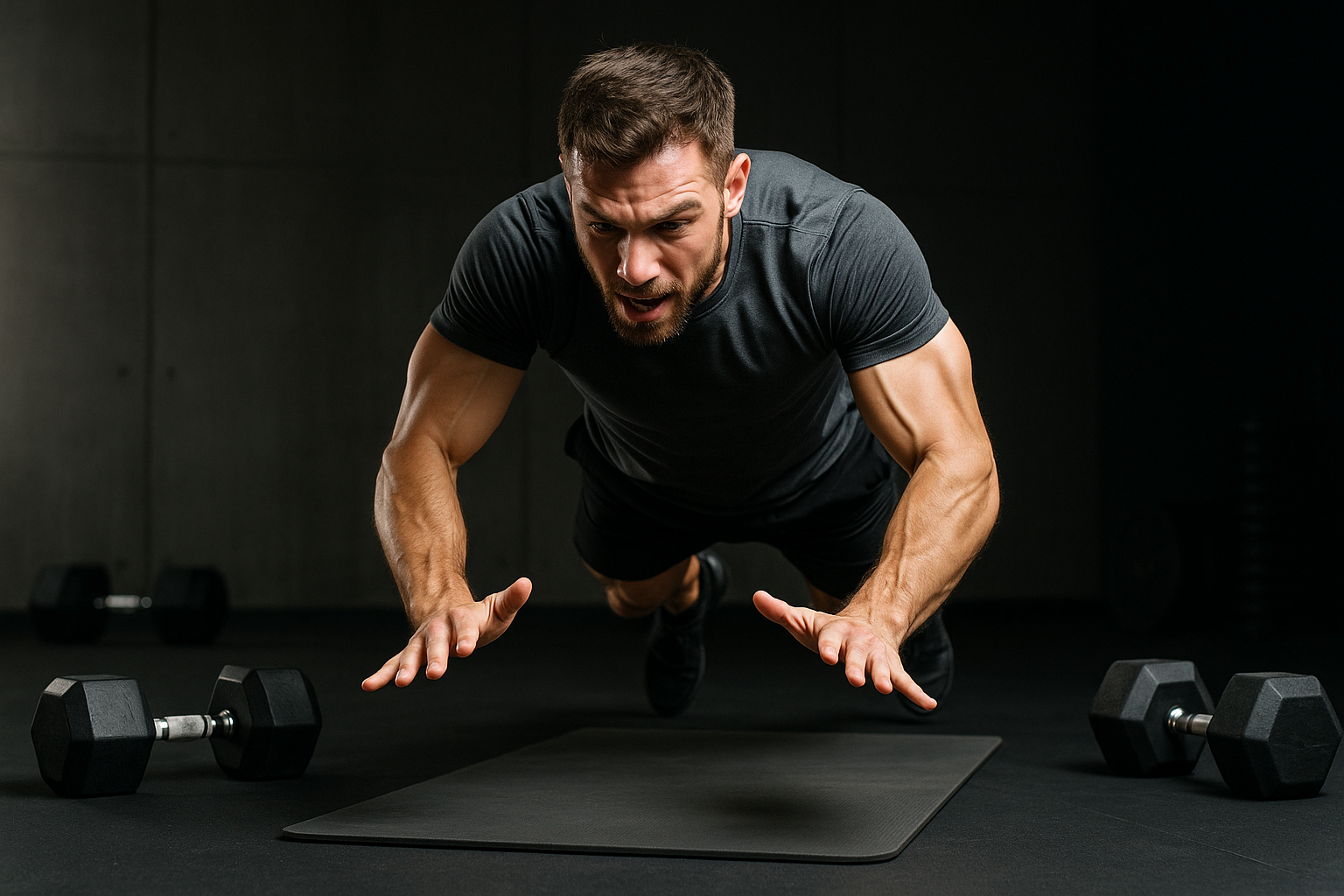
Plyometric push-ups are a quintessential power training move, combining strength and speed to enhance upper body explosiveness. This exercise involves pushing off the ground with enough force to lift the hands off the floor, engaging the pectoral muscles, triceps, and shoulders. Plyometric push-ups not only build upper body strength but also improve muscular endurance and coordination. The explosive nature of this movement increases the rate of force development, making it an effective exercise for athletes and fitness enthusiasts alike. Additionally, the core muscles are engaged to stabilize the body during the airborne phase, contributing to overall core strength. Incorporating plyometric push-ups into your routine can significantly enhance upper body power and functional fitness.
Move 2 - The Dynamic Depth of Box Jumps
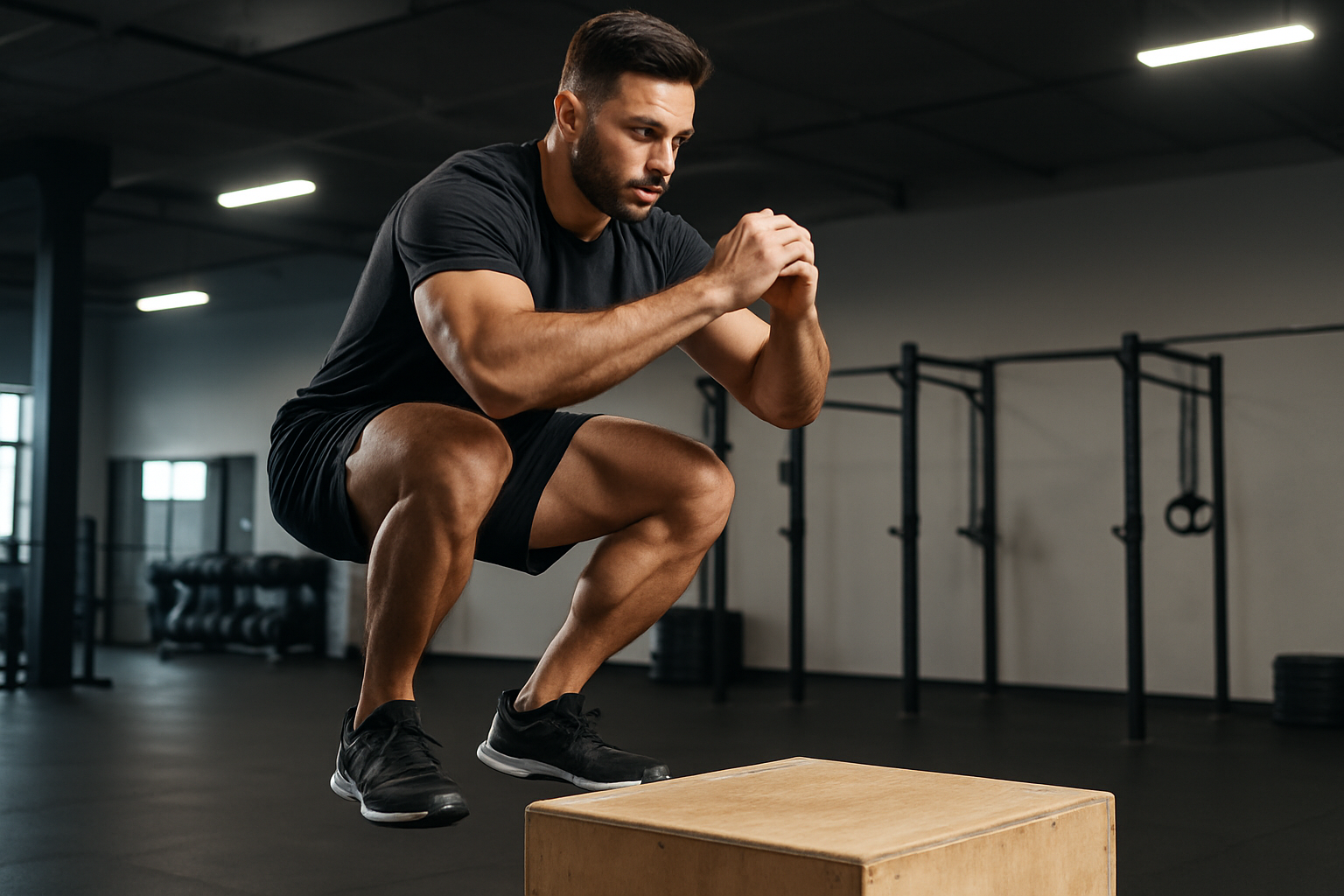
Box jumps are a powerful lower body exercise that targets the quadriceps, hamstrings, glutes, and calves. This move involves jumping onto a raised platform with both feet, emphasizing explosive power and agility. Box jumps are particularly effective for improving vertical leap and overall athletic performance, as they train the body to generate maximum force quickly. The repetitive jumping motion also enhances cardiovascular endurance and burns calories, contributing to fat loss and muscle definition. Moreover, box jumps improve proprioception, or body awareness, which is essential for balance and coordination. As a versatile exercise, box jumps can be modified in height and intensity to suit various fitness levels, making them an indispensable component of any power training regimen.
Move 3 - The Impact of Kettlebell Swings
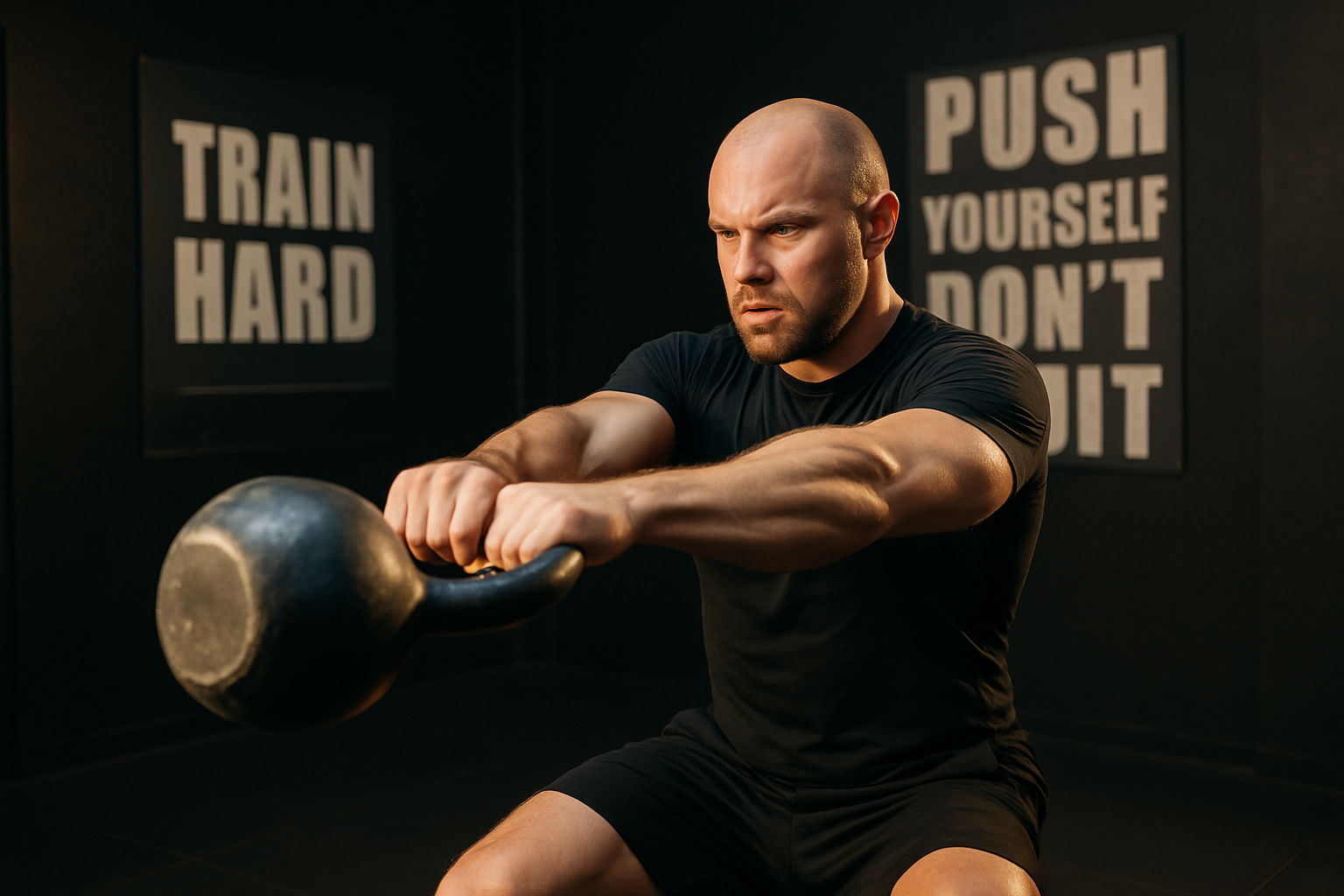
Kettlebell swings are a dynamic full-body exercise that combines strength, power, and cardiovascular conditioning. This movement involves swinging a kettlebell between the legs and up to shoulder height, engaging the hips, glutes, core, shoulders, and back. The explosive hip thrust required for a proper swing is key to generating power, making it an excellent exercise for enhancing athletic performance. Kettlebell swings also improve grip strength and endurance, which are crucial for various sports and daily activities. The rhythmic, swinging motion elevates the heart rate, providing a robust cardiovascular workout that complements the strength-building benefits. By incorporating kettlebell swings into your routine, you can develop a powerful, well-rounded physique that is both strong and enduring.
Move 4 - The Medicine Ball Slam: A Full-Body Power Release

The medicine ball slam is a powerful and cathartic exercise that engages nearly every muscle in your body. Start by holding a medicine ball and lifting it explosively overhead, rising onto your toes. Then, with a forceful exhale, slam the ball down to the ground in front of you, engaging your core, glutes, and shoulders to generate maximum force. This movement enhances explosive power throughout your entire kinetic chain, from your toes to your fingertips. The medicine ball slam not only builds power but also serves as an excellent cardio workout, boosting your metabolism and relieving stress. It’s a versatile move that requires minimal equipment but delivers maximum results.
Move 5 - The Unilateral Power of Single-Leg Box Jumps
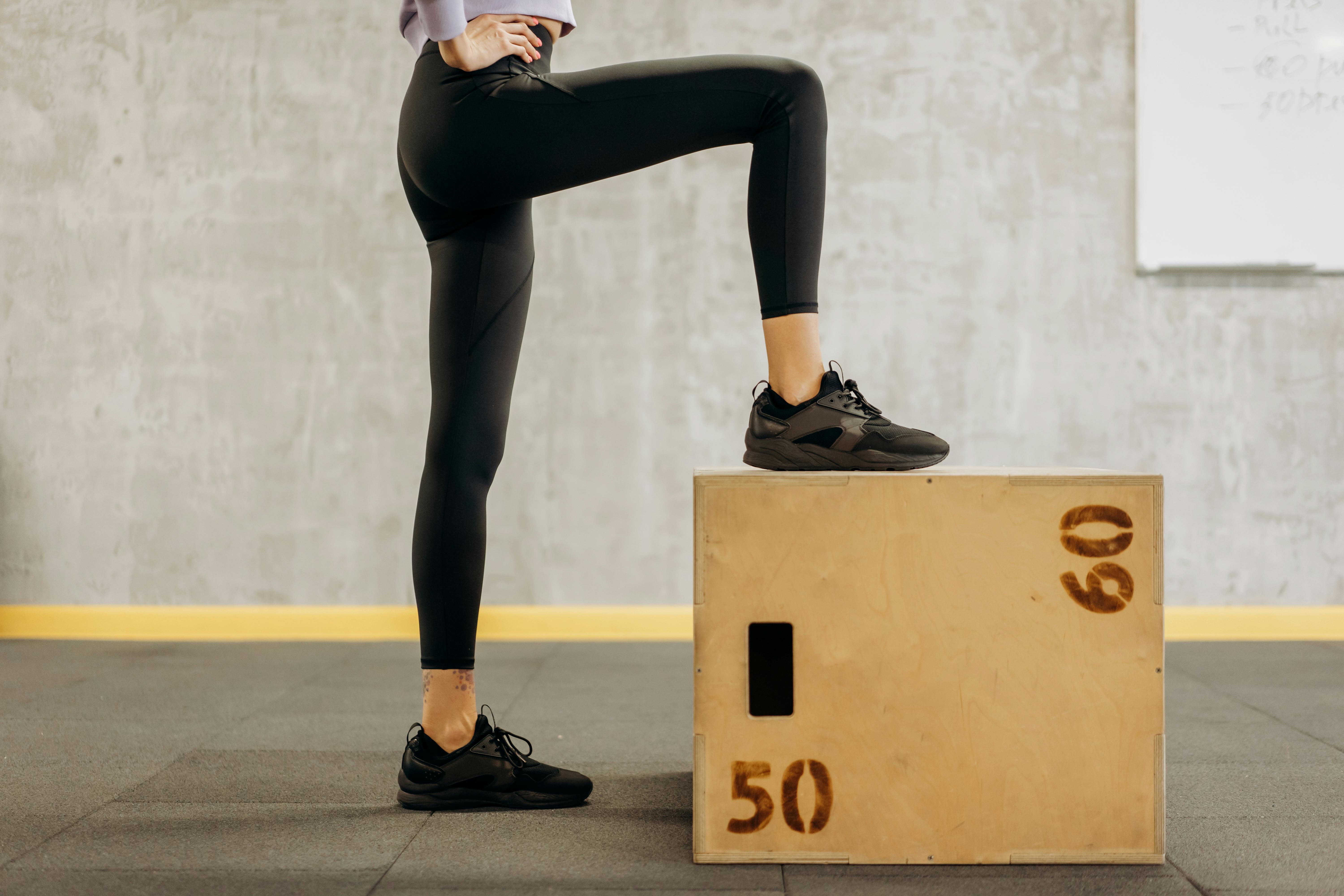
While box jumps are a staple, focusing on single-leg box jumps takes power training to a new level. This unilateral (one-sided) variation not only builds explosive leg power but also corrects muscular imbalances, which are a common cause of injury. Jumping and landing on one leg forces your stabilizing muscles to work harder, improving your balance, coordination, and proprioception. This exercise is particularly beneficial for athletes in sports like soccer or basketball, which require frequent changes of direction and single-leg movements. Incorporating single-leg box jumps into your routine can build a more resilient and balanced lower body.
Move 6 - The Olympic Power Clean: A Technical Challenge
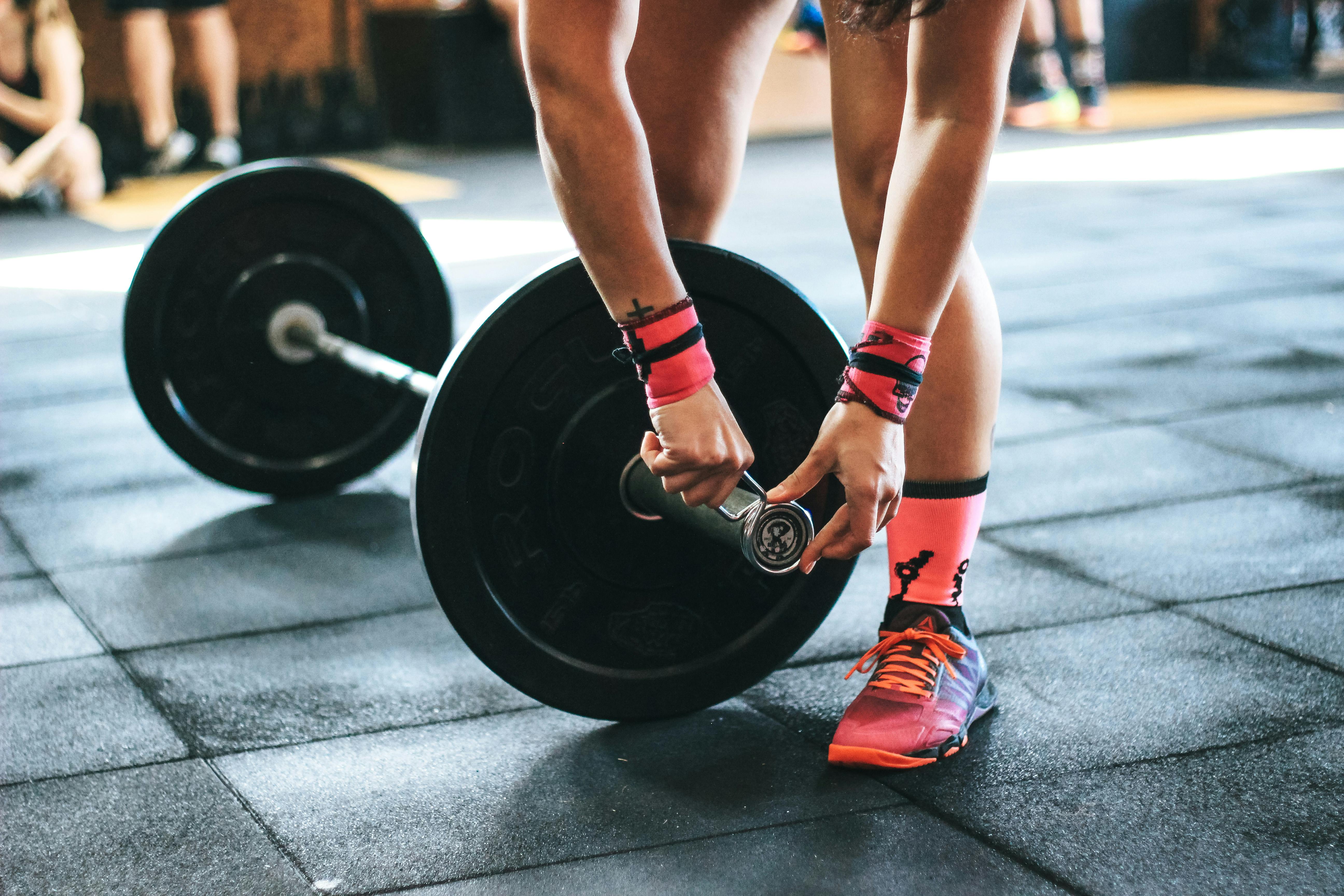
The power clean is a cornerstone of Olympic weightlifting and a true test of explosive power. This complex, multi-joint movement involves lifting a barbell from the floor to your shoulders in a single, fluid motion. The power clean engages a vast number of muscles, including the hamstrings, glutes, quads, back, and shoulders, making it a full-body exercise. The explosive hip drive required for the lift trains the body to generate maximum force quickly, while the catch at the shoulders improves coordination and stability. While it requires proper coaching and practice, mastering the power clean offers unparalleled benefits for building explosive power.
Move 7 - The Explosive Thruster: A Metabolic Power Boost
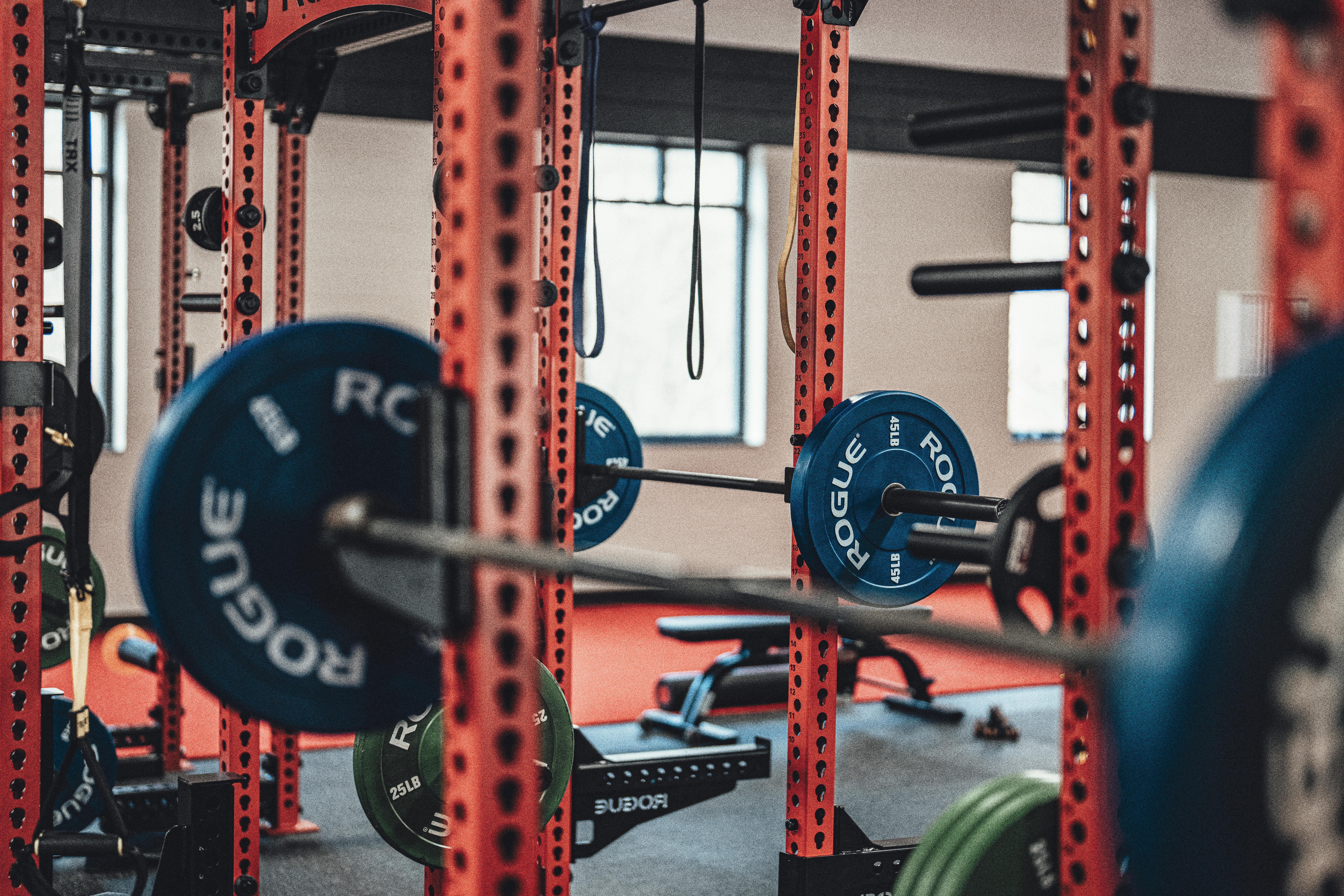
The dumbbell or barbell thruster is a dynamic exercise that combines a front squat with an overhead press. This fluid, explosive movement starts with a squat, and as you drive up from the bottom, you use that momentum to press the weight overhead. The thruster is a metabolic powerhouse, engaging your entire body and elevating your heart rate quickly. The explosive transition from the lower body to the upper body trains your body to transfer force efficiently, a key component of power. It's an excellent move for building muscular endurance and overall power, all in one seamless, high-intensity exercise.
Move 8 - The Plyometric Lunge Jump: A Cardio and Power Combo

The plyometric lunge jump is a dynamic lower-body exercise that combines the benefits of a lunge with the power of a jump. Start in a lunge position, then explosively jump straight up into the air, switching your legs mid-air and landing in a lunge with the opposite leg forward. This movement builds explosive power in your quadriceps, hamstrings, and glutes, while the quick transition enhances agility and coordination. The rapid, repetitive jumping also provides a robust cardiovascular workout, improving your endurance and metabolic rate. It's a challenging but highly effective exercise for building a powerful and agile lower body.
Move 9 - Band-Resisted Broad Jumps: Overcoming the Pull

Broad jumps are a classic power move, but adding a resistance band takes this exercise to a new dimension. Anchor a large resistance band behind you and loop it around your waist. As you perform a broad jump, the band provides constant pull, forcing your muscles to fire even more explosively to overcome the resistance. This creates a powerful training stimulus for your glutes, quads, and hamstrings. The concentric phase (the jump) is made more challenging, while the eccentric phase (the landing) is a soft reset. This variation specifically targets the starting strength and rapid force development needed for sprinting and other forward-moving power activities, making it an excellent addition to any routine.
Move 10 - The Clapping Pull-Up: A Test of Explosive Back Power
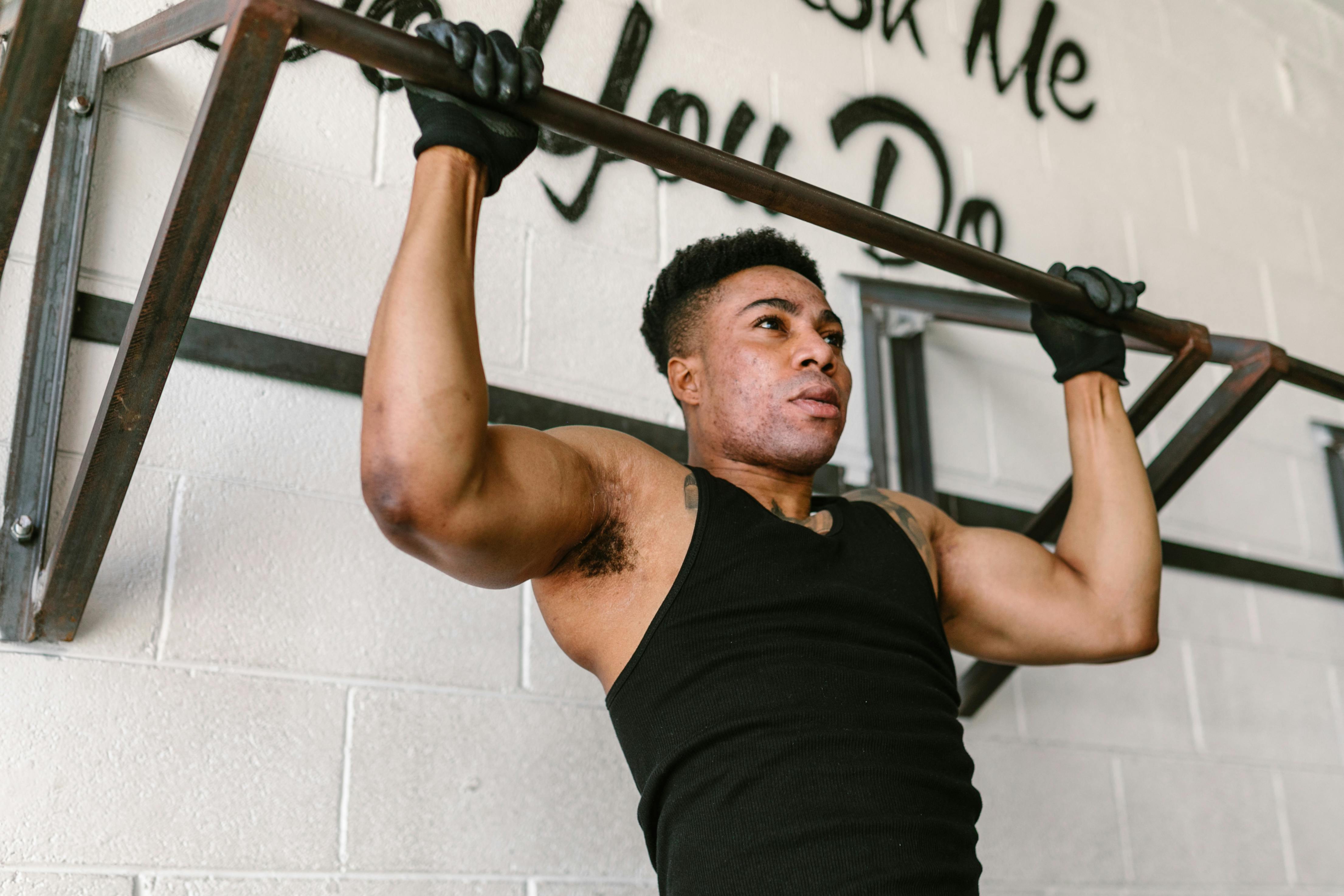
While pull-ups are a great strength exercise, the clapping pull-up transforms them into a truly explosive power move. This advanced variation requires you to pull your body up with such force that your hands leave the bar, allowing you to quickly clap before regripping. This movement trains the fast-twitch fibers in your lats, biceps, and shoulders, improving the rate at which you can generate force. Beyond the impressive display of strength, the clapping pull-up enhances neuromuscular coordination and grip strength. It's a fantastic progression from the standard pull-up and a clear indicator of superior upper-body power.
Move 11 - Loaded Sprints: Building Power with Resistance
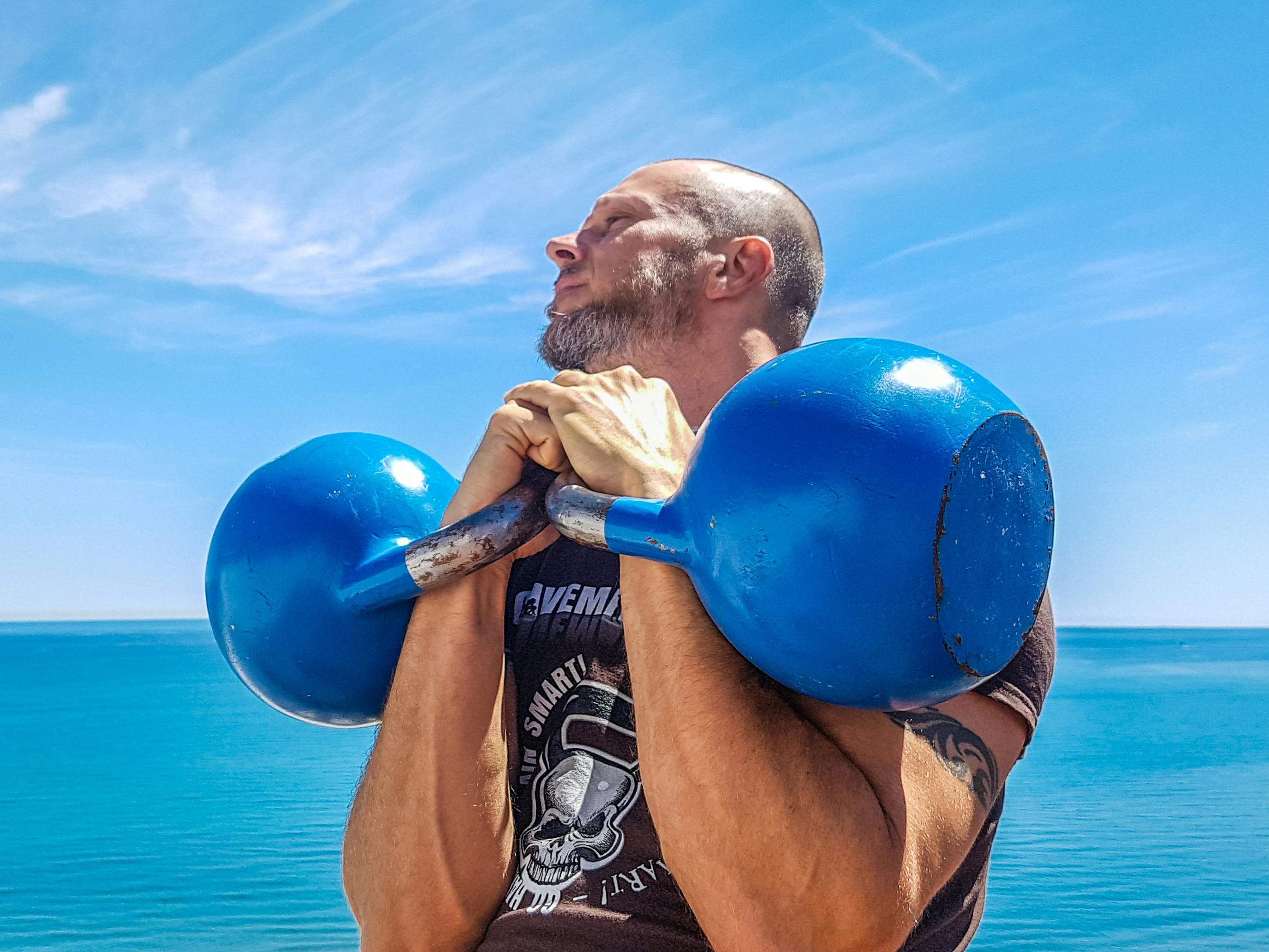
Sprinting is a form of power training, but adding external resistance with a sled, parachute, or vest elevates the exercise. Loaded sprints force your leg muscles to produce more force to propel your body forward, enhancing both your strength and speed. This type of training is highly effective for building explosive power in the lower body and improving acceleration. The resistance also puts a greater demand on your core and back, leading to a more stable and powerful body. Loaded sprints offer a practical application of power training that translates directly to real-world performance.
Move 12 - The Kettlebell Snatch: A Single-Arm Explosive Lift
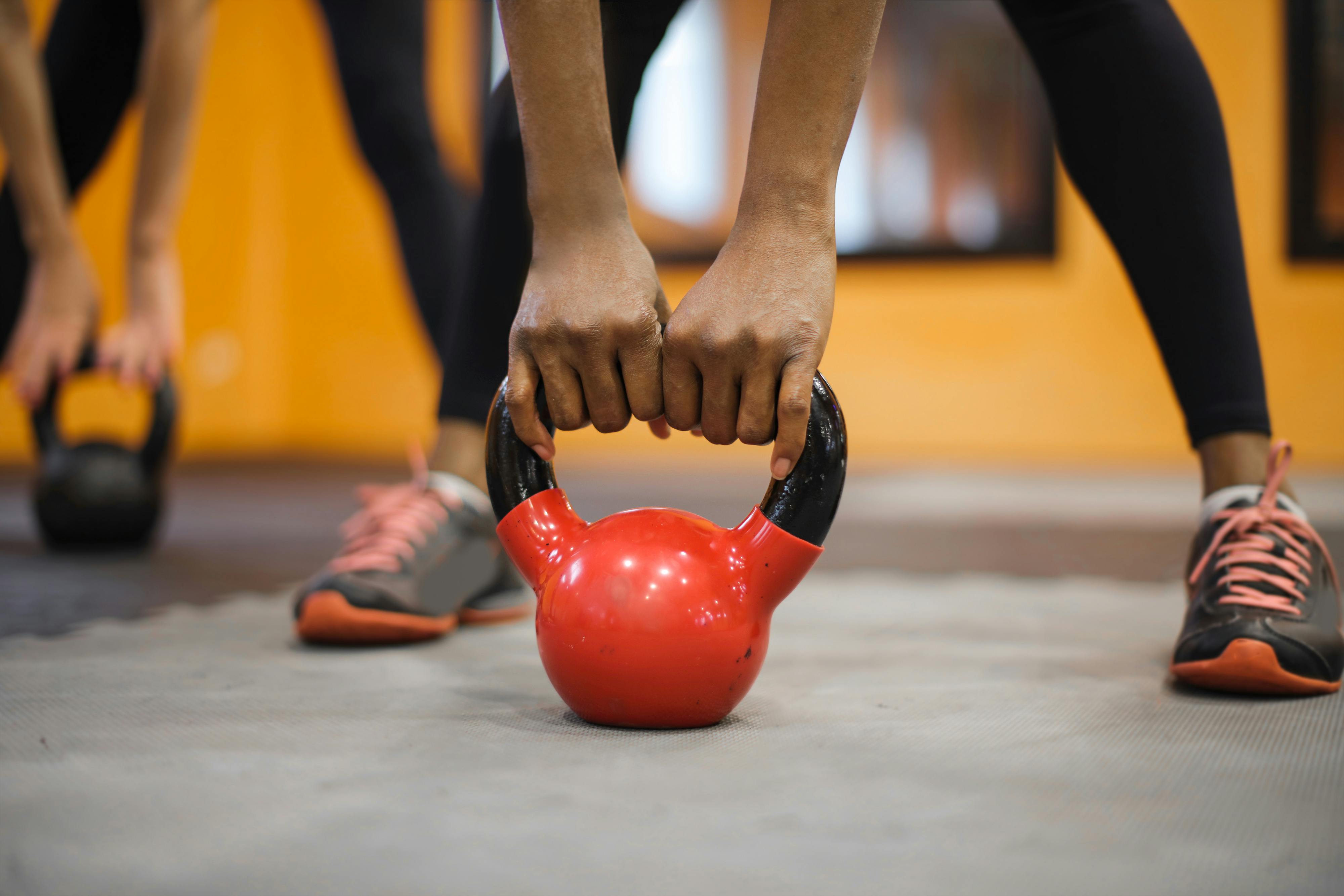
The kettlebell snatch is a dynamic, single-arm movement that requires a powerful, fluid motion. Starting with the kettlebell between your legs, you use an explosive hip drive to lift the weight overhead in one swift motion. This exercise is a fantastic power builder, engaging your hips, core, shoulders, and back while demanding precision and control. Unlike a kettlebell swing, the snatch requires you to control the weight in the overhead lockout position, improving shoulder stability and mobility. The unilateral nature of the kettlebell snatch also helps to correct muscle imbalances and improve core rotational power, a key component of functional fitness.
Move 13 - The Seated Box Jump: Maximizing Concentric Power
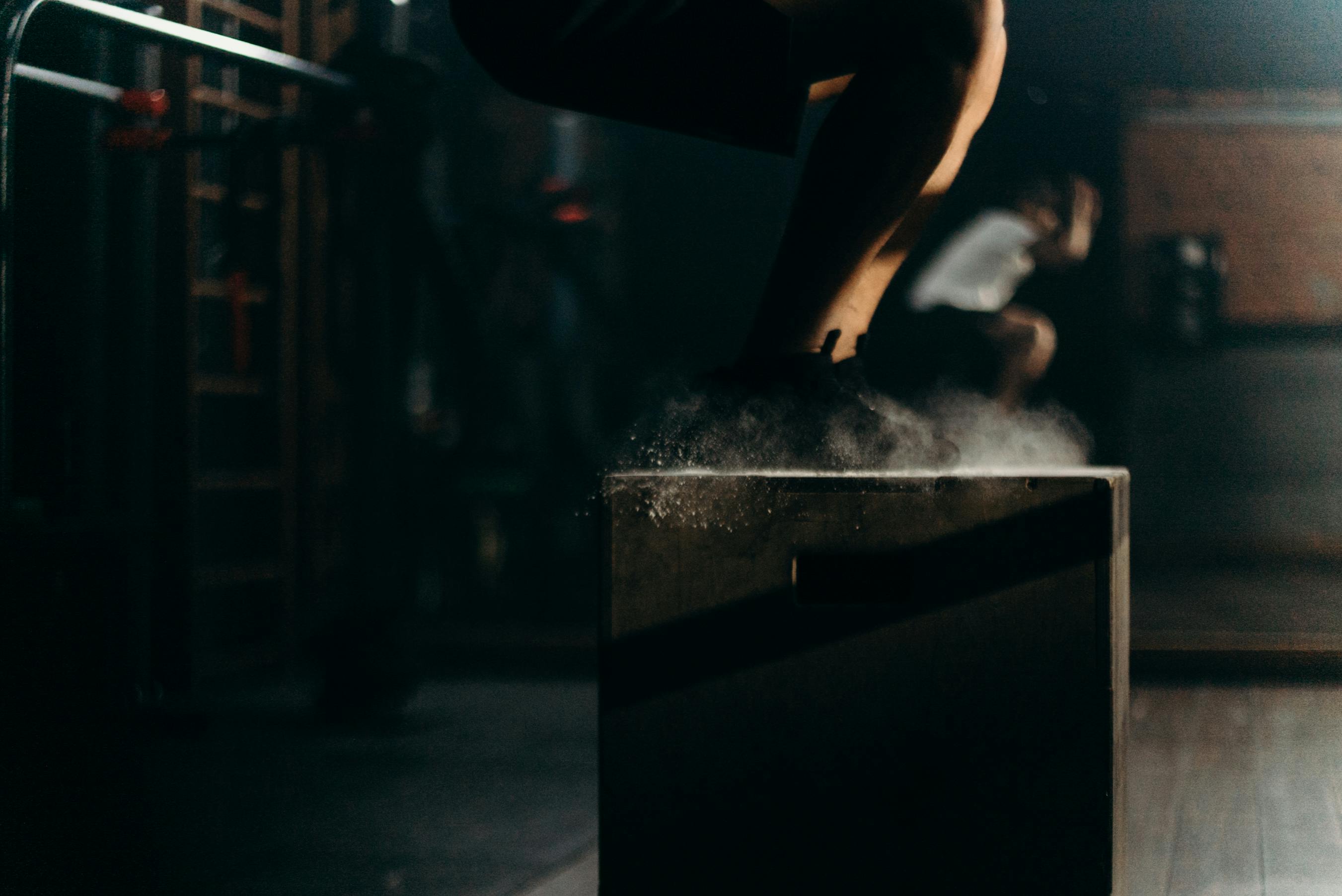
The seated box jump is a unique and effective variation that focuses on the concentric phase of the jump, or the upward push. By starting from a seated position on a low box or bench, you eliminate the stretch reflex that normally assists a jump, forcing your muscles to generate all the power from a dead stop. This method directly trains the fast-twitch fibers responsible for explosive movements. It's an excellent way to improve your ability to produce maximum force quickly, which is crucial for activities like jumping, sprinting, and lifting. This move is perfect for those looking to improve their athletic power without relying on the momentum from a countermovement.
Move 14 - Rotational Medicine Ball Throws: The Power of the Twist
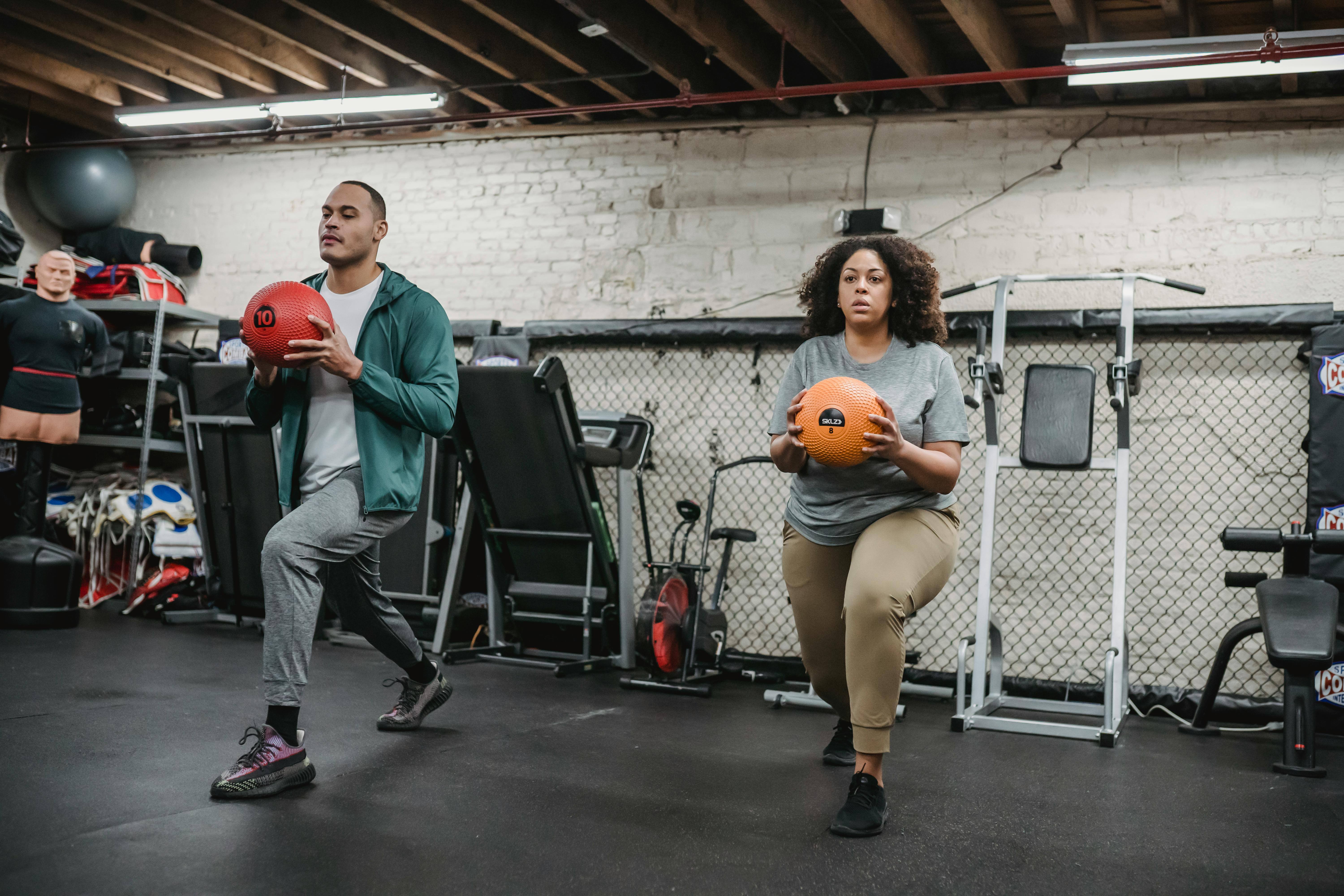
Rotational medicine ball throws build explosive power in a crucial, often-neglected plane of motion. Stand with your feet shoulder-width apart, holding a medicine ball to one side. Explosively rotate your hips and core, throwing the ball forcefully against a wall. This exercise builds rotational power and core stability, which is vital for sports like baseball, golf, and tennis, as well as for everyday activities like carrying groceries or turning to lift something. By training your body to generate force from a twist, you’ll unlock a new level of functional strength.
Move 15 - Sled Pushes: Raw, Ground-Based Power
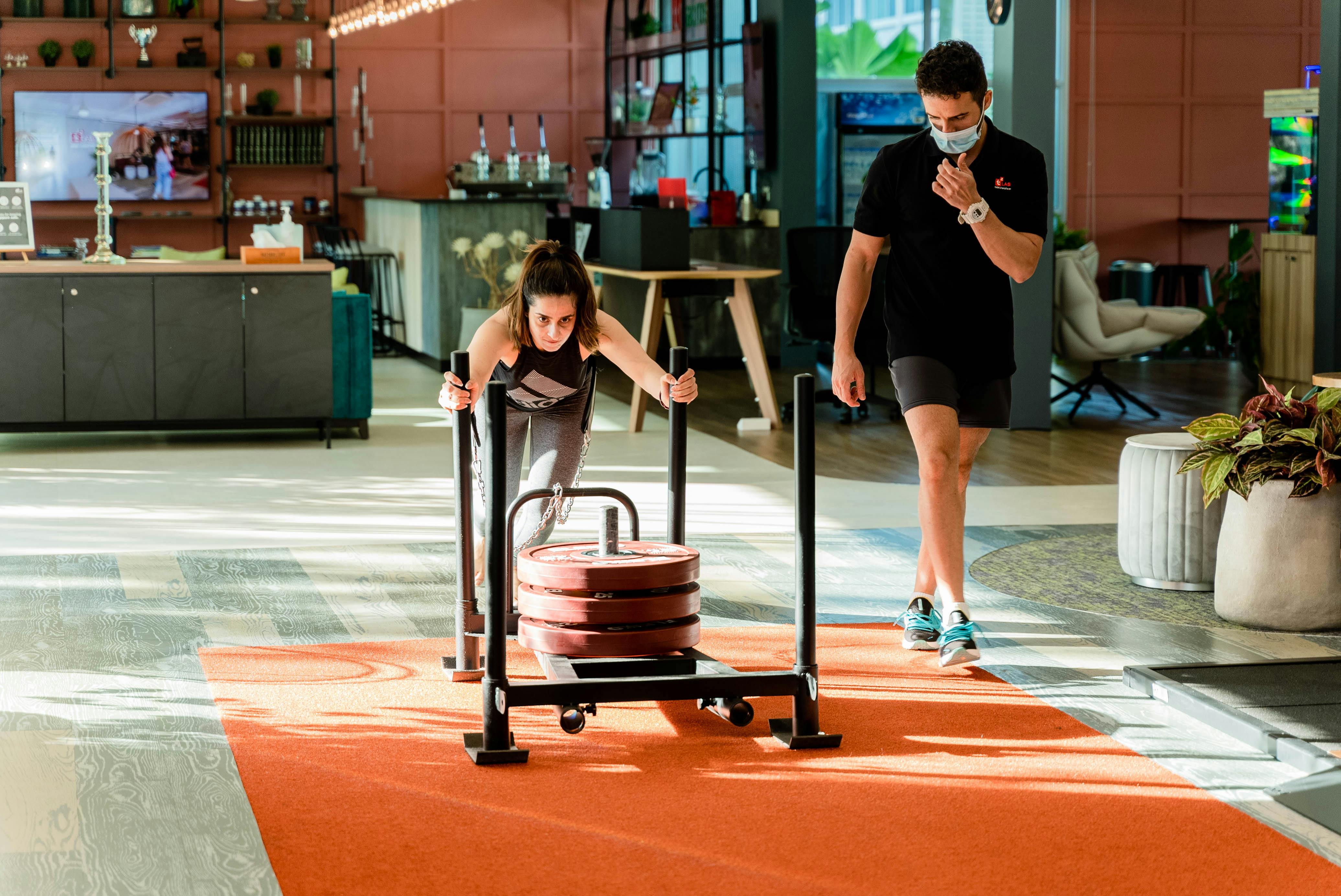
Sled pushes are a fantastic, low-impact way to build explosive lower-body power and conditioning. Load a sled with weight and grip the handles, keeping your body low and your back straight. Drive through your legs to push the sled forward in short, powerful strides. This movement forces your legs, glutes, and core to generate force against constant resistance, enhancing both strength and acceleration. Unlike sprinting, it has no eccentric (lowering) phase, which means it’s easier on your joints. Sled pushes are a primal, effective exercise that can dramatically improve your power output.
Move 16 - Wall Balls: A Full-Body Conditioning Tool

Wall balls are a classic power-endurance exercise that combines a full-body squat with an explosive overhead throw. Hold a medicine ball at your chest, facing a wall. Squat down, and as you stand, use the momentum to throw the ball upward against the wall. Catch it on the rebound and immediately transition into the next repetition. This continuous movement rapidly elevates your heart rate while building power in your quads, glutes, and shoulders. It trains your body to transfer force efficiently from the lower body to the upper body, making it a complete metabolic conditioning tool.
Move 17 - Speed Skaters: Dynamic Lateral Agility
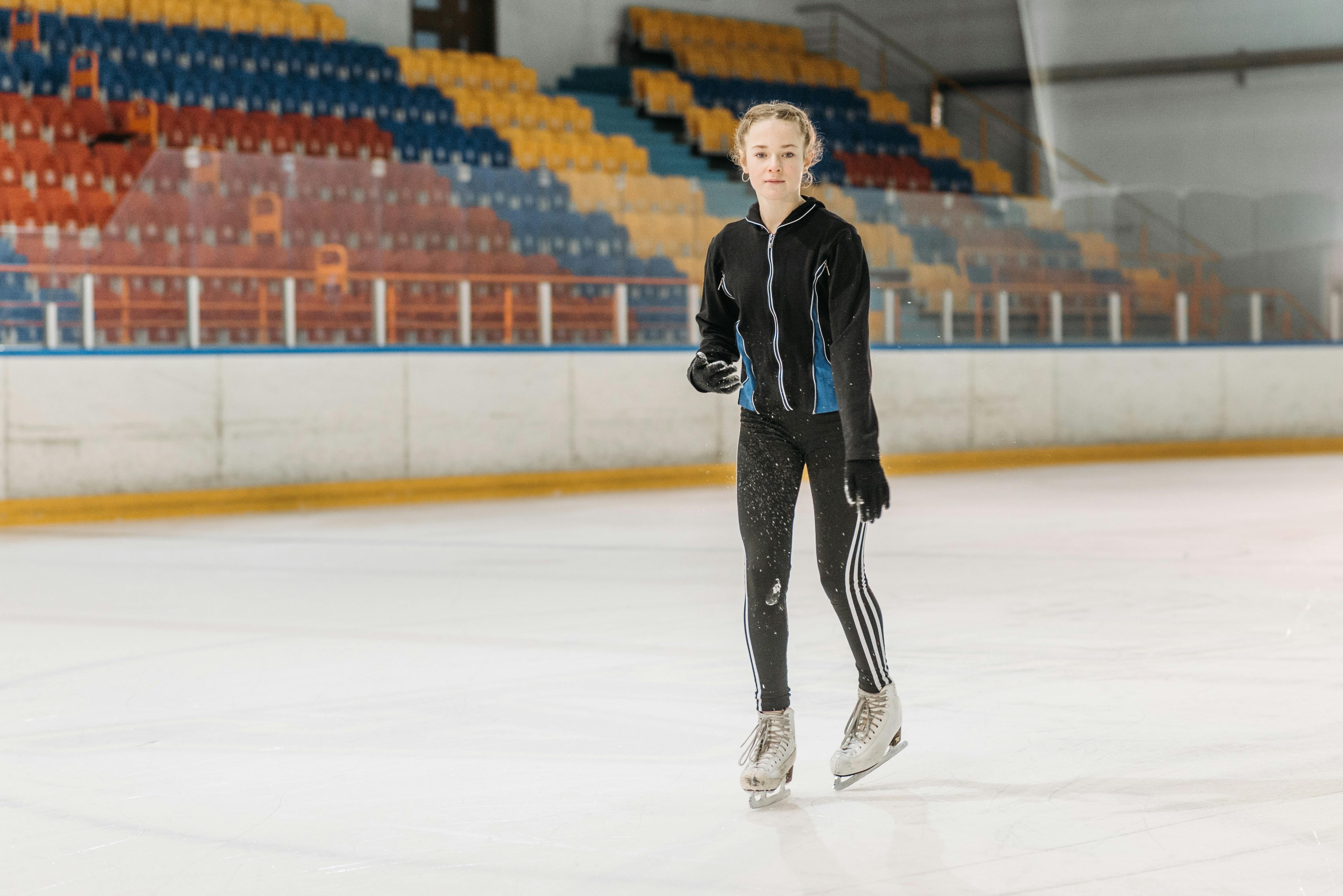
While many exercises focus on forward motion, speed skaters are a plyometric move that builds explosive power and agility in the lateral plane. Standing on one leg, push off forcefully and leap to the side, landing softly on your opposite foot. Swing your arms to help with momentum and balance. The goal is to cover as much distance as you can with each jump, while maintaining stability upon landing. This exercise strengthens your glutes, hips, and stabilizing muscles around your knees, making it a perfect workout for improving agility and preventing injuries in dynamic sports and daily life.
Move 18 - The Burpee to Box Jump: A Hybrid Power Test
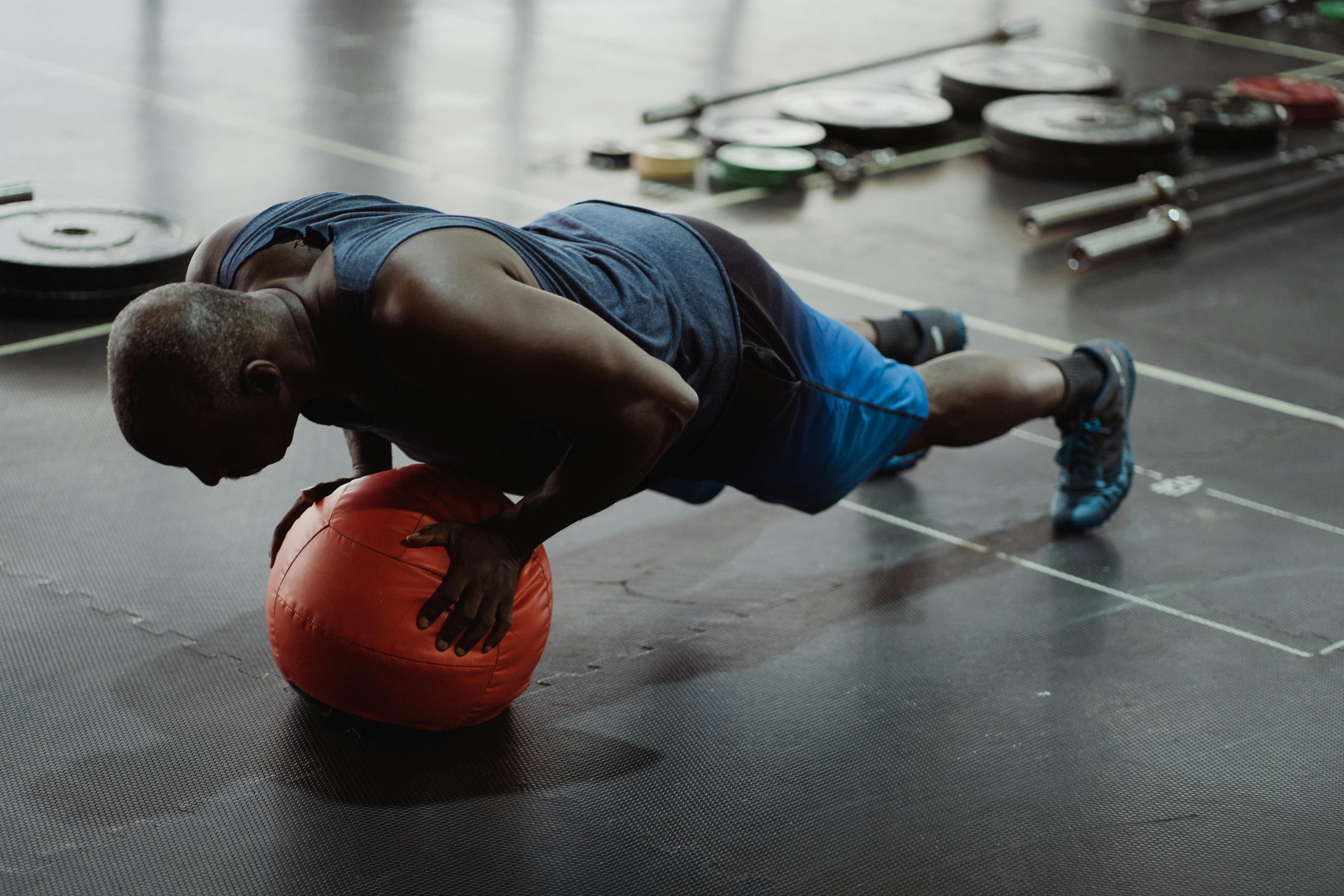
The burpee to box jump is a hybrid exercise that combines the power of a burpee with the explosiveness of a box jump for a brutal, full-body conditioning workout. Start with a burpee: a quick squat, kick-back into a push-up, and return to standing. As you stand, immediately launch yourself into an explosive box jump. This continuous movement tests your endurance, strengthens your entire body, and builds explosive power in every muscle. It’s an advanced move that proves your body can generate force from a fatigued state, making it a true test of mental and physical resilience.
Move 19 - Depth Jumps: The Stretch-Shortening Cycle
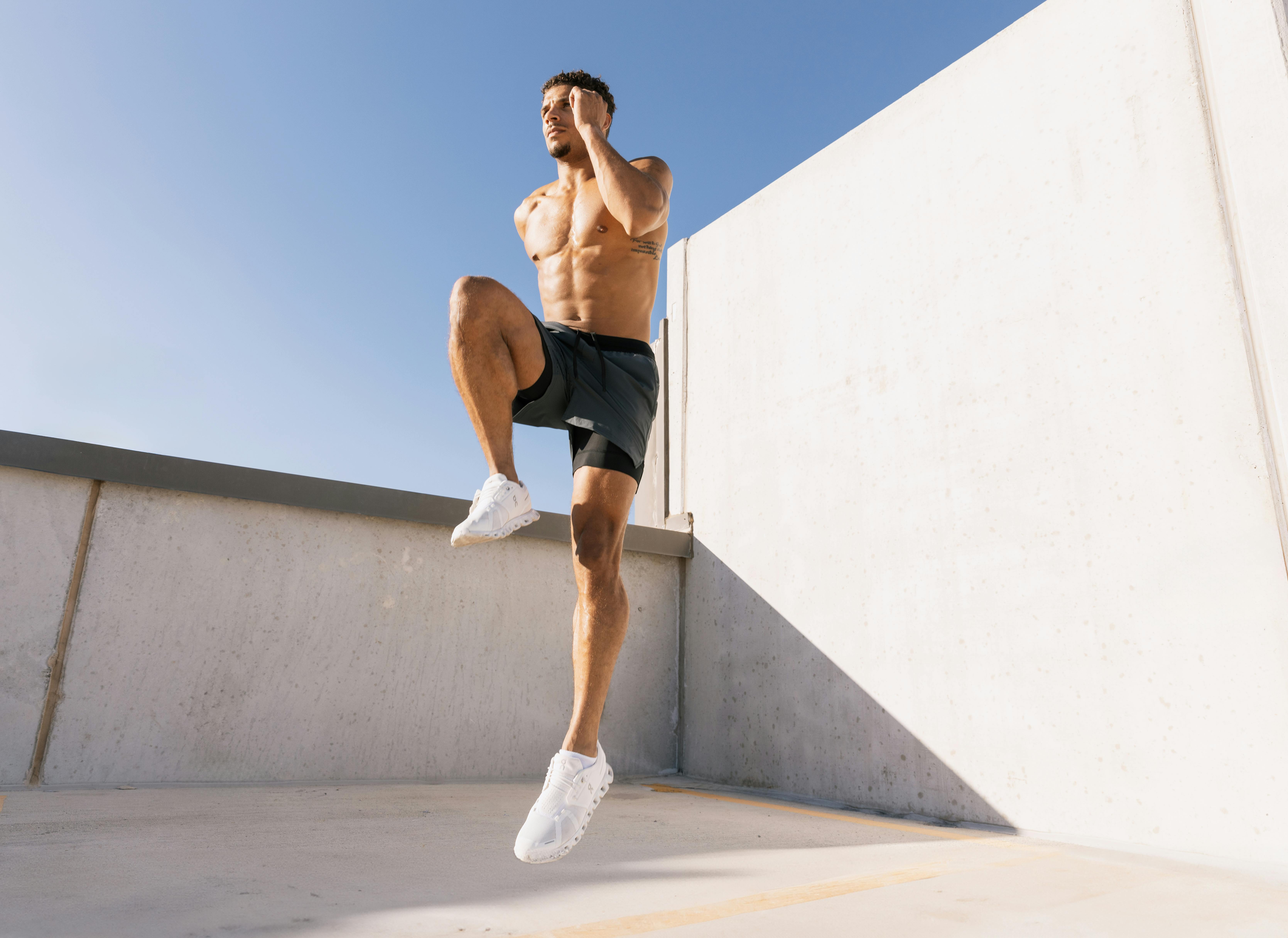
For athletes seeking to enhance their vertical leap and explosive power, the depth jump is a highly effective, advanced plyometric exercise. Start by stepping off a low box or platform, allowing your body to absorb the landing. Immediately upon landing, explode upward into a vertical jump. This action trains the stretch-shortening cycle, forcing your muscles to rapidly transition from absorbing force to generating it. This exercise is excellent for improving reactivity and a powerful vertical impulse. It should be performed with caution and proper form to protect your joints, but it offers a unique progression for experienced trainees.
Move 20 - Tuck Jumps: The Vertical Explosion

Tuck jumps are a powerful, bodyweight plyometric exercise that focuses on vertical explosiveness and core strength. From a standing position, you jump as high as you can, bringing your knees up to your chest. The key is to land softly and immediately reset for the next repetition. This high-intensity movement builds explosive power in your quadriceps, hamstrings, and glutes, while also engaging your core to stabilize your body mid-air. Tuck jumps are a fantastic way to elevate your heart rate and improve your jumping ability, making them a challenging yet rewarding addition to any power training circuit.
Move 21 - Medicine Ball Scoop Toss: The Forward Drive
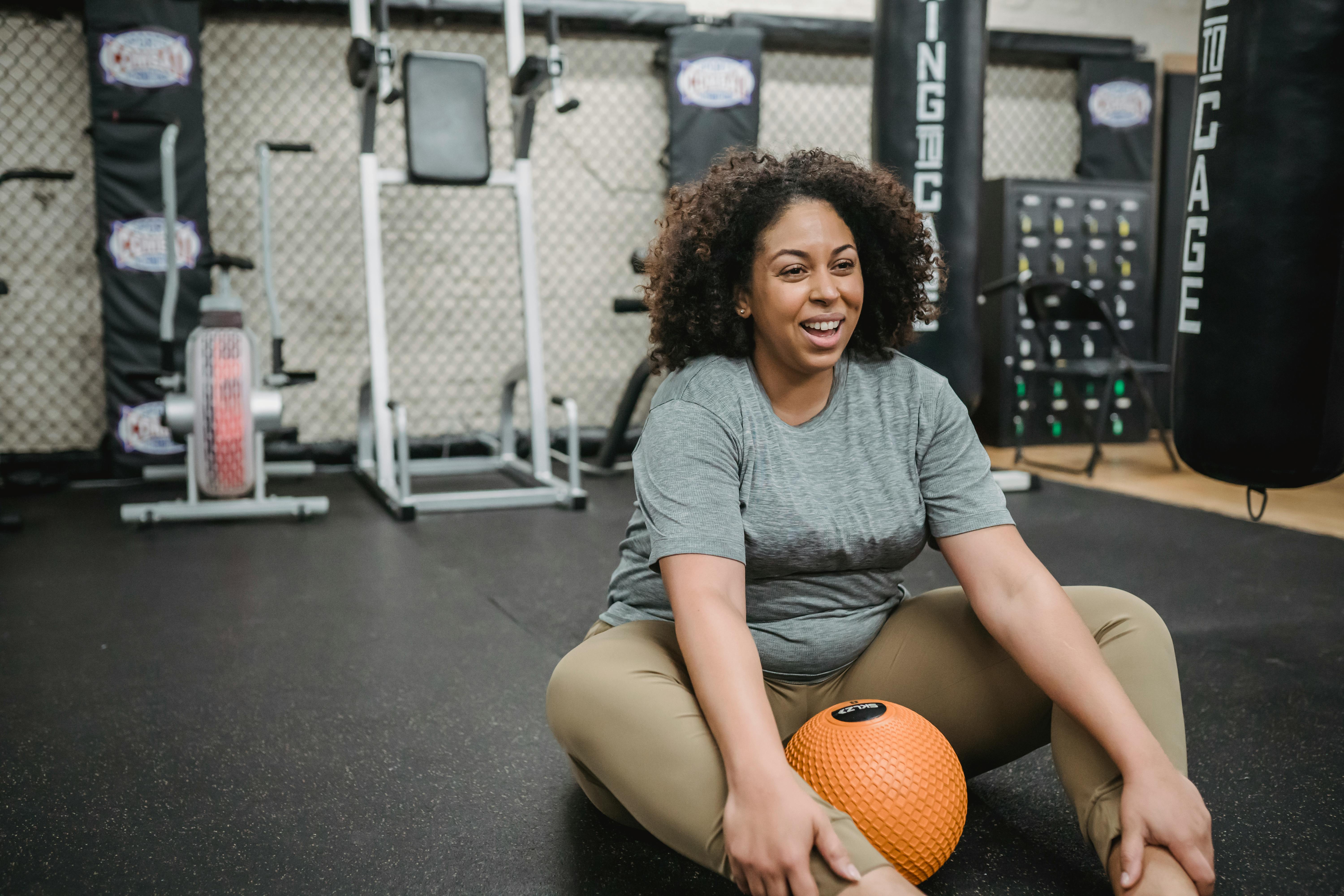
While medicine ball slams focus on downward force, the medicine ball scoop toss trains explosive power in a forward direction. Stand in a squat position, holding a medicine ball between your knees. Explosively drive through your legs and hips, scooping the ball forward and upward to toss it as far as possible. This dynamic movement enhances power in your entire posterior chain, from your glutes to your hamstrings and back. It's a great way to build functional, ground-based power that translates directly to sports like football, basketball, and sprinting.
Move 22 - Kneeling Jump Squats: Power from a Dead Stop
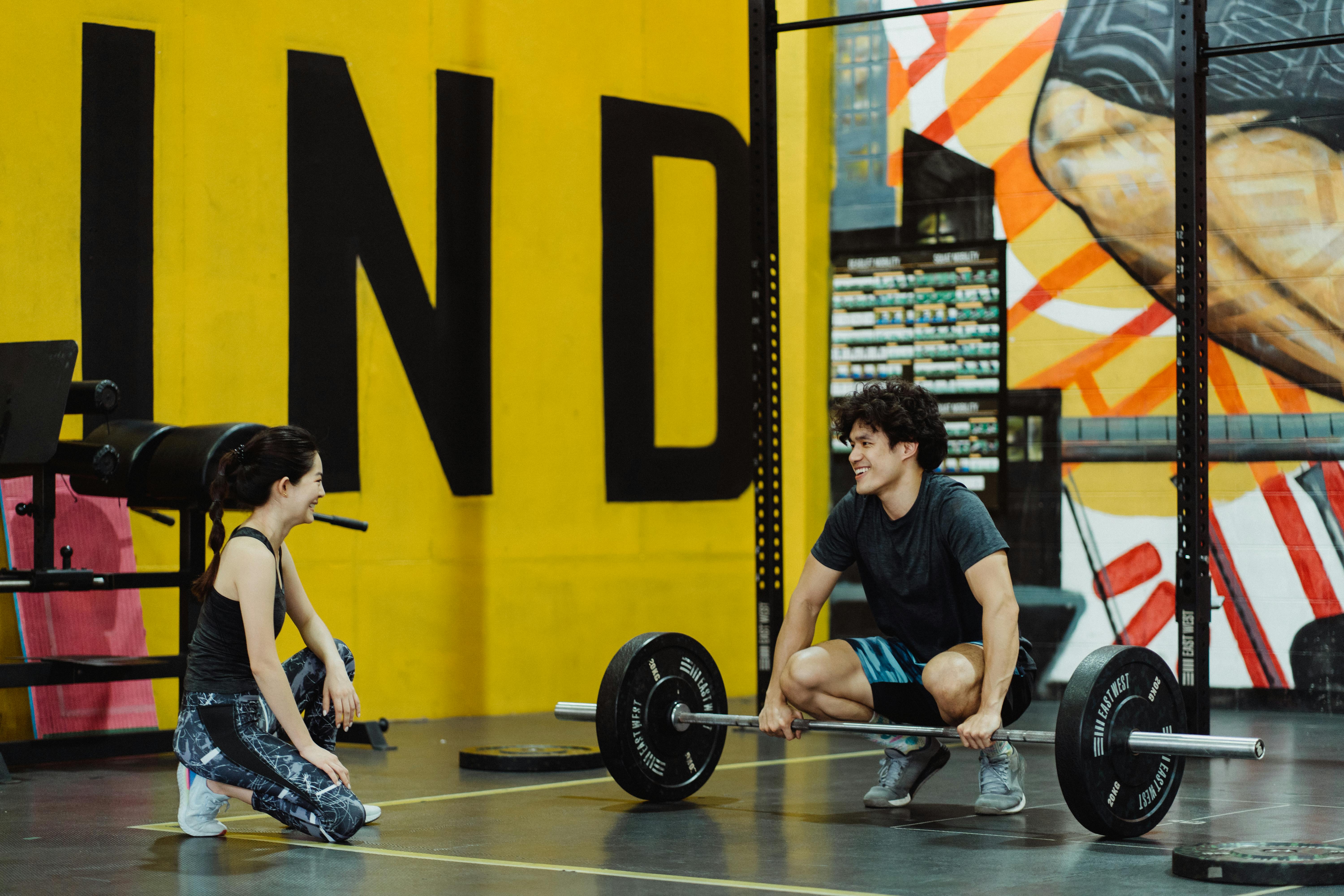
This plyometric exercise is a unique way to train explosive power by completely removing the countermovement, or "stretch reflex," that normally assists a jump. Start by kneeling on a mat or soft surface. From this position, you explosively jump upward into a standing position, then immediately jump again. The kneeling jump squat forces your muscles to generate all the power from a dead stop, which directly trains your fast-twitch fibers for maximum force output. It’s an effective and joint-friendly way to improve starting strength and explosive leg power.
Move 23 - Band-Resisted Sprints: Overcoming the Pull
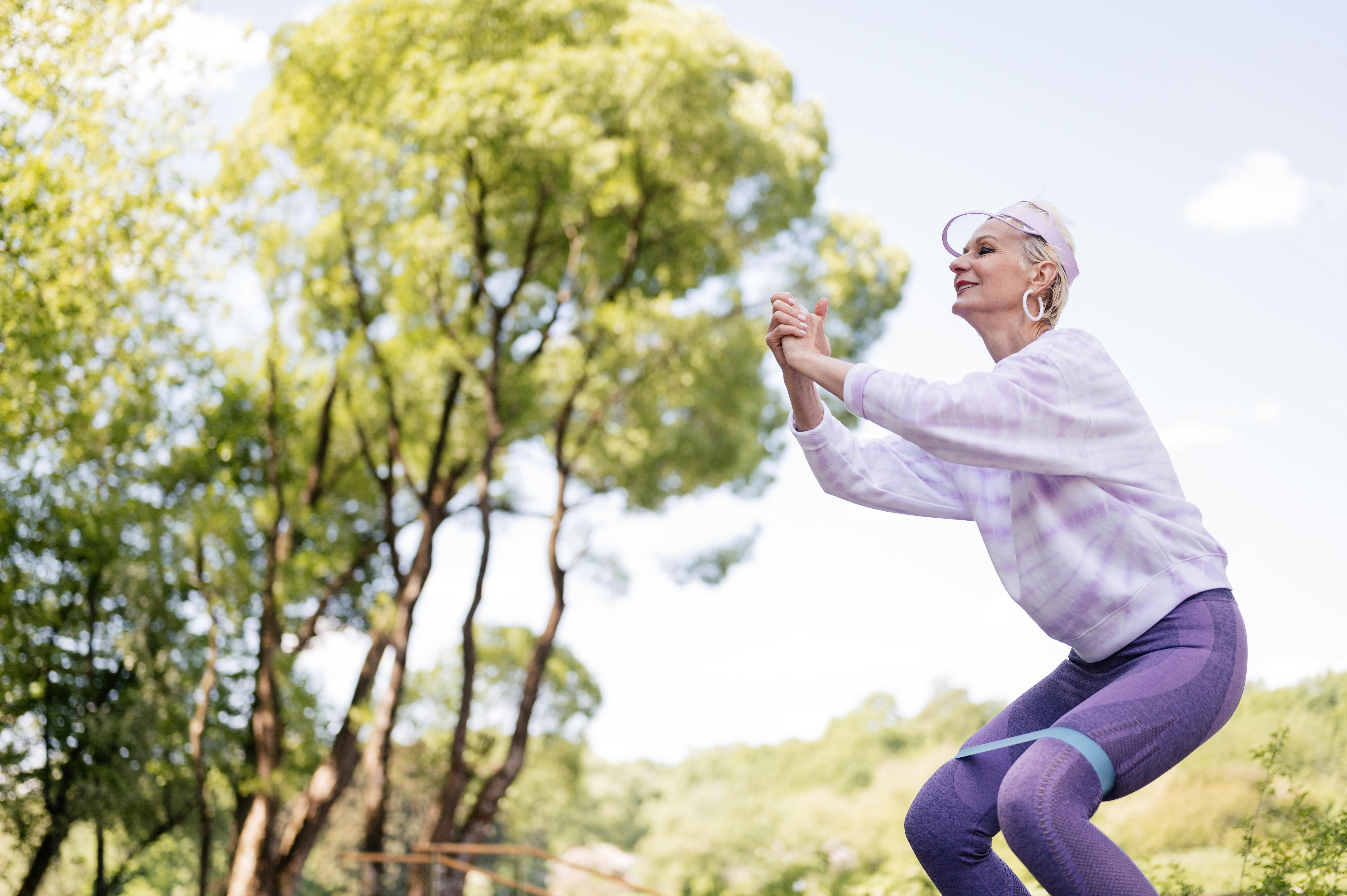
For athletes looking to improve their acceleration and top-end speed, band-resisted sprints are a highly effective power training method. Secure a resistance band around your waist and have a partner hold the other end. Drive forward in a sprint, forcing your legs and core to work explosively against the band's pull. This exercise trains your body to generate maximum force in a horizontal plane, which is crucial for the first few steps of a sprint. It's a great way to improve your athletic power and acceleration without needing a sled or a parachute.
Move 24 - Single-Leg Broad Jumps: Unilateral Horizontal Force
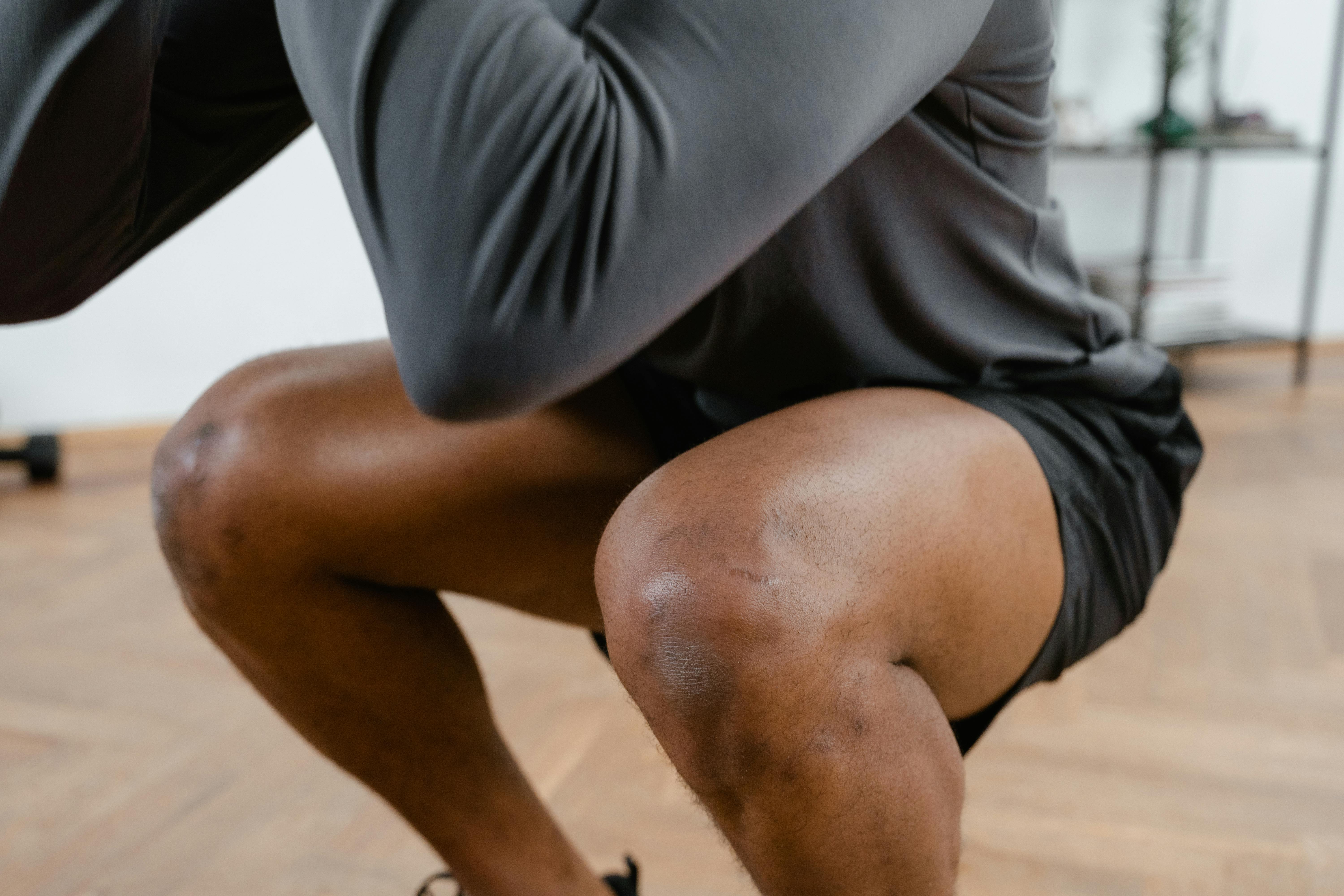
While bilateral broad jumps are a power staple, the single-leg broad jump is essential for sport-specific power and correcting muscle imbalances. Starting on one foot, you drive the opposite knee up and explode horizontally, landing softly on the same foot you jumped from. This trains your glutes and hamstrings to generate maximum horizontal force unilaterally, which is necessary for actions like leaping in basketball or pushing off during a sprint. This exercise significantly improves dynamic stability, ensuring that your body is resilient and powerful on either leg.
Move 25 - Isometric-to-Plyometric Push-Up

This advanced technique combines a static hold with an explosive release to build starting strength in the upper body. Start by lowering yourself into the bottom of a push-up and holding that position—one inch above the floor—for 3-5 seconds. Immediately upon the hold's release, explode upward with maximum force, pushing your hands completely off the ground (like a plyometric push-up). This method eliminates the stretch reflex, forcing your chest and triceps to fire maximally from a dead stop, resulting in a dramatic increase in upper-body power and rate of force development.
Move 26 - Power Step-Ups: Explosive Vertical Unilateral

The power step-up is a controlled, unilateral move that emphasizes speed and balance. Using a box or bench, step up quickly, driving the non-working leg's knee toward your chest with maximal velocity. The focus isn't just on lifting your body, but on creating explosive vertical momentum in the drive leg. This move enhances hip flexor power and single-leg stability, which is essential for running and climbing. It provides a unique blend of controlled strength and explosive action that builds resilient, powerful legs without the high impact of jumping.
Move 27 - Anti-Rotation Med Ball Throw
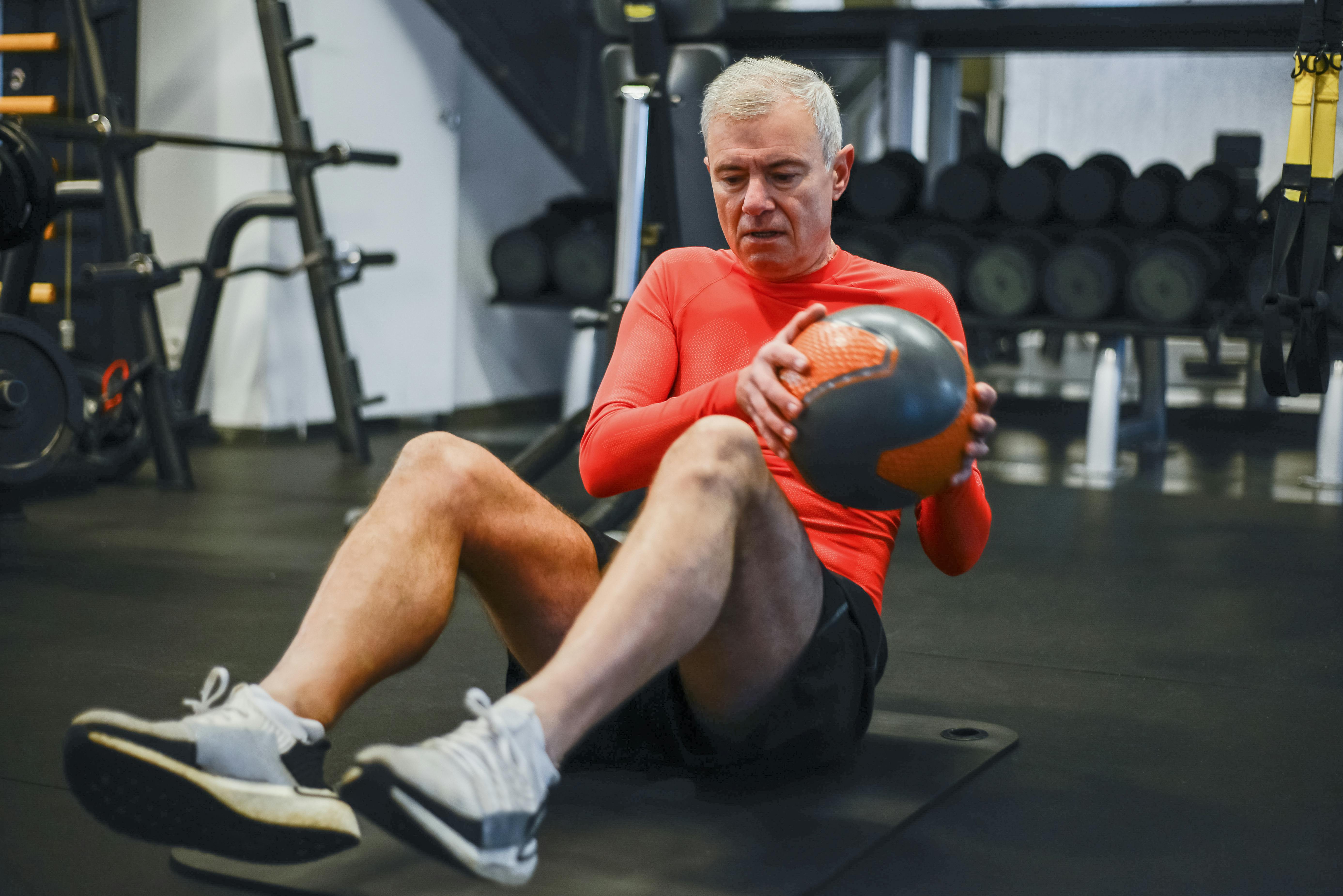
To build true rotational power, your core must first be able to resist rotation. This drill uses a medicine ball to train that concept. Stand facing a partner or wall with the ball held slightly out. Explosively twist, throwing the ball forward and releasing all your core power. This is distinct because the movement focuses on the torsional tension built just before the release. Training the core's ability to quickly accelerate and decelerate during the twist improves rotational speed, crucial for transferring force from the ground up in throwing, swinging, and striking movements.
Move 28 - Depth Drop to Max Vertical Jump

This highly advanced drill emphasizes reactive strength and the nervous system's speed. Stand on a box (30-60cm high) and simply step off, focusing only on landing softly with bent knees. Immediately upon landing, explode straight up into a maximum vertical jump. The goal is to minimize the time your feet spend on the ground. This exercise trains the muscles to react instantly to the force of the drop, significantly improving your ability to absorb energy (eccentric strength) and immediately generate explosive force (concentric power). It is the fastest way to train pure muscle reactivity.
Move 29 - Kettlebell Jumps: The Load-Assisted Vertical Leap
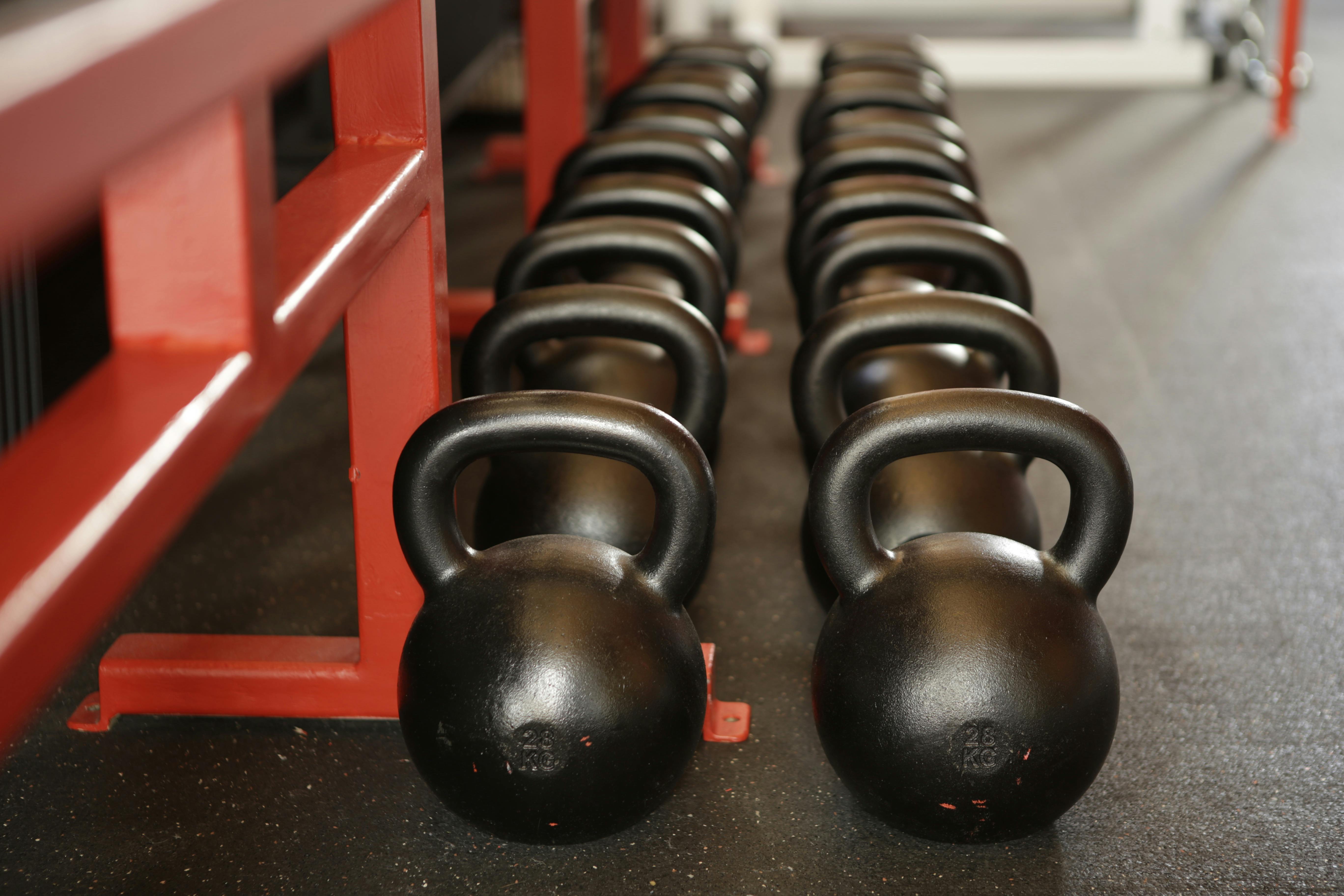
Kettlebell jumps are a highly effective, advanced plyometric exercise that leverages a moderate load for increased power output. Hold two light-to-moderate kettlebells at your sides, perform a quick dip into a quarter-squat, and then explode vertically. The addition of the external load forces your glutes, hamstrings, and quads to generate significantly more force to lift the weight, training the concentric phase of the jump. Crucially, the kettlebells train the "braking" muscles (stabilizers and core) to handle a heavier eccentric load upon landing, dramatically improving overall lower-body resilience and explosive strength from a dead stop.
Move 30 - The Hurdle Hop: Sequential Ground-Contact Power
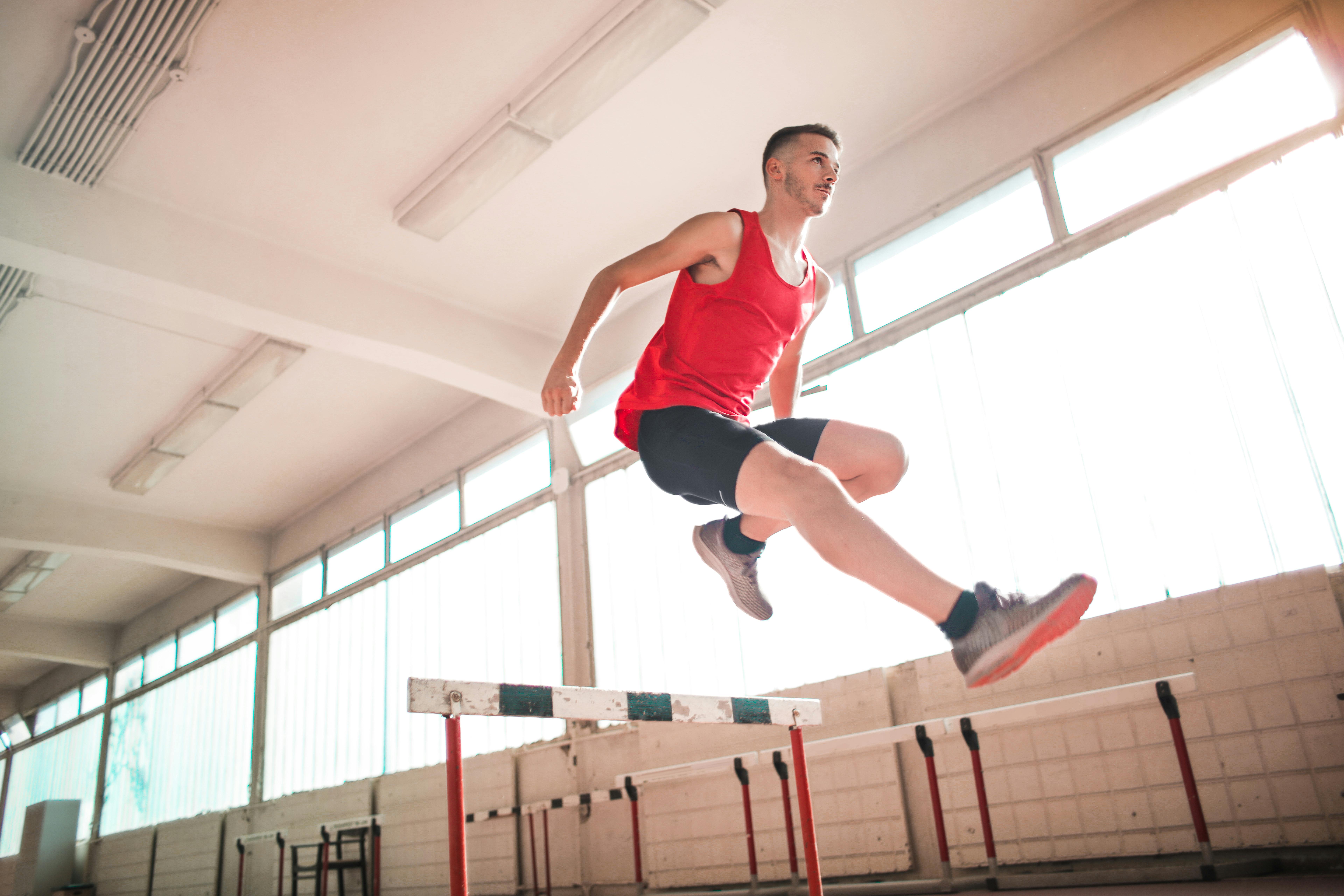
The hurdle hop is a rhythmic, multi-obstacle plyometric drill that is less about single-jump height and more about rapid, sequential force production. Line up a series of low hurdles or cones and bound over them consecutively, minimizing ground contact time between each hurdle. This movement enhances the elastic energy storage and release in your tendons and muscles, directly improving running and sprinting economy. It trains your nervous system to fire fast-twitch fibers quickly and repeatedly, making it an essential exercise for boosting reactive leg speed and muscular endurance.
Move 31 - Lateral Bound with Stick: Single-Leg Horizontal Force

The lateral bound is crucial for building powerful side-to-side force, which is often neglected but vital for stability and agility in all sports. Stand on one leg, then explode laterally (to the side) with maximum effort, covering as much distance as possible. The 'stick' portion requires you to land softly on the opposite leg and immediately stabilize for 2-3 seconds. This is a powerful move for strengthening the often-weak hip abductors and adductors while improving single-leg balance. It builds the explosive power needed for cutting, changing direction, and preventing knee and ankle injuries.
Move 32 - Resisted Broad Jump: Focusing the Horizontal Drive
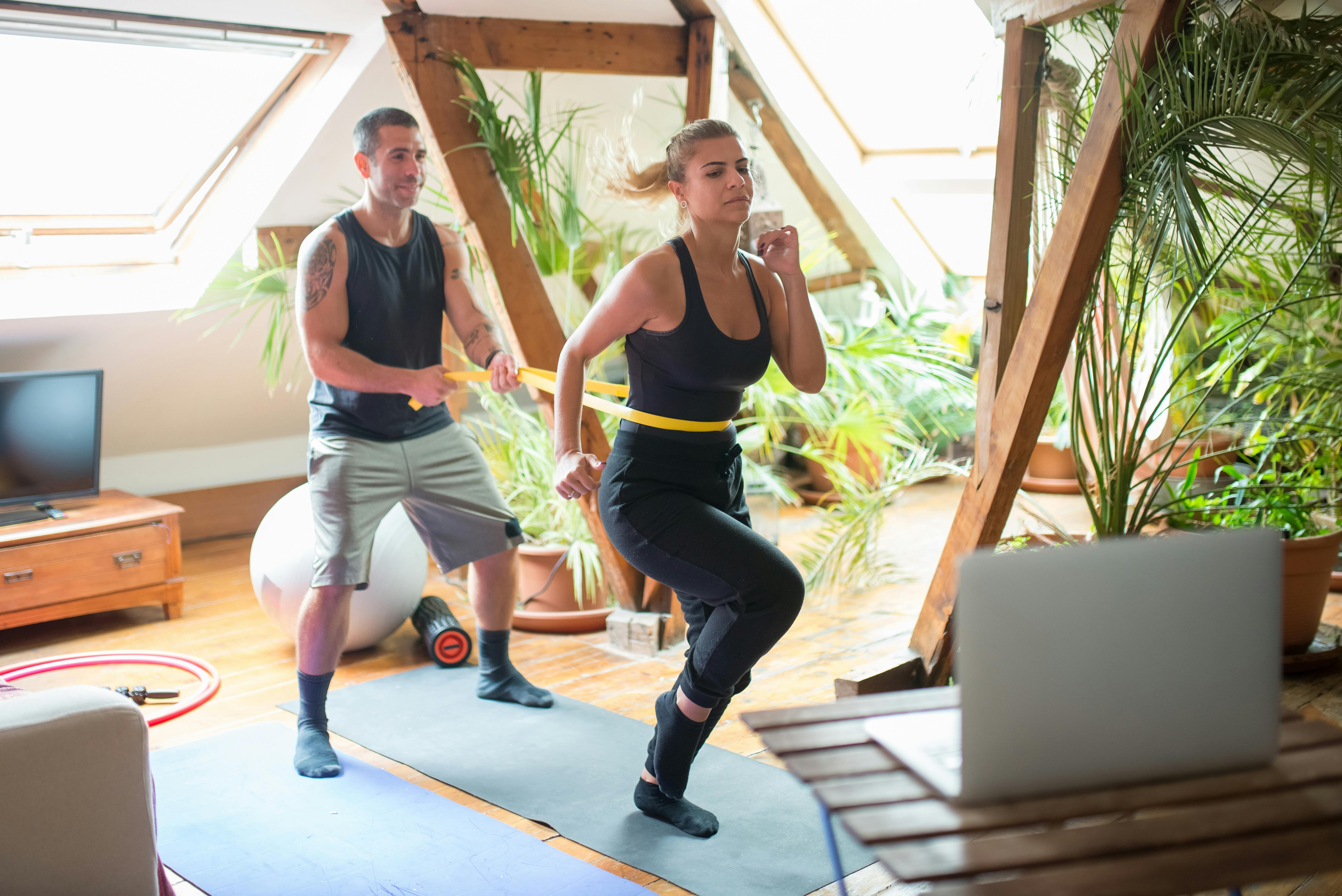
While you have the band-resisted sprint, the Resisted Broad Jump uniquely focuses on maximal horizontal displacement power from a stationary position. Use a partner or an anchor point with a resistance band looped around your waist. Drive forward into a broad jump against the resistance, forcing your hips to generate immense explosive power in the horizontal plane. The resistance challenges your starting strength and the initial acceleration phase, which is critical for sprinting starts and rapid movement off the mark. It is a pure, measurable test of ground-based, forward-propelling power.
Move 33 - Medicine Ball Supine Chest Pass: Explosive Pectoral Power
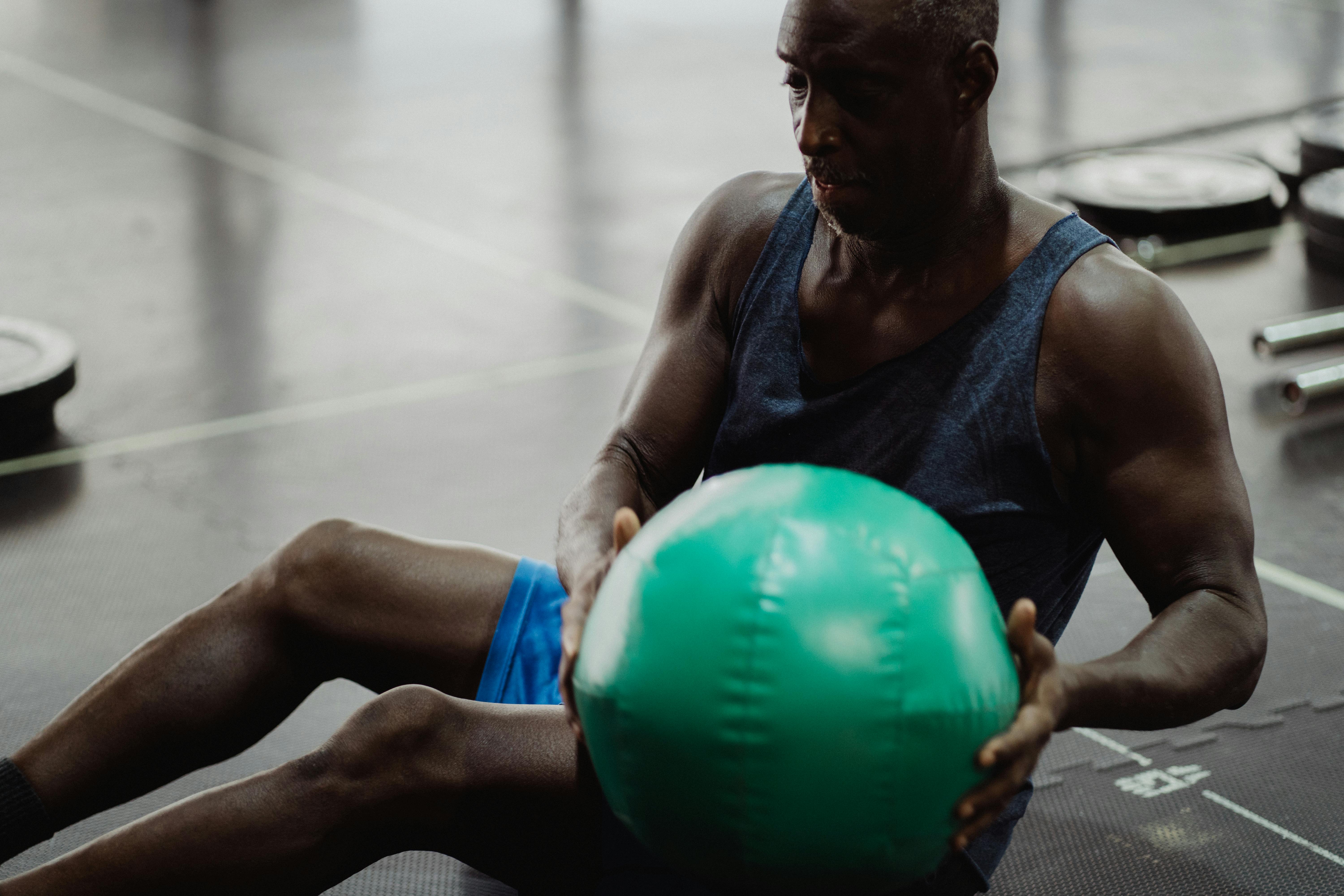
The Supine (Lying) Chest Pass with a medicine ball is an excellent way to isolate and maximize upper-body power without relying on a standing counter-movement. Lie on your back on the floor, holding a medicine ball over your chest. Explosively push the ball straight up and forward as high as possible, catching it on the rebound. By eliminating the leg drive, this exercise forces the chest, anterior deltoids, and triceps to produce pure, maximum concentric power from a dead stop. It's an effective, low-impact method for enhancing throwing, striking, and pushing power.
34. Alternating Renegade Row with Kettlebell Toss
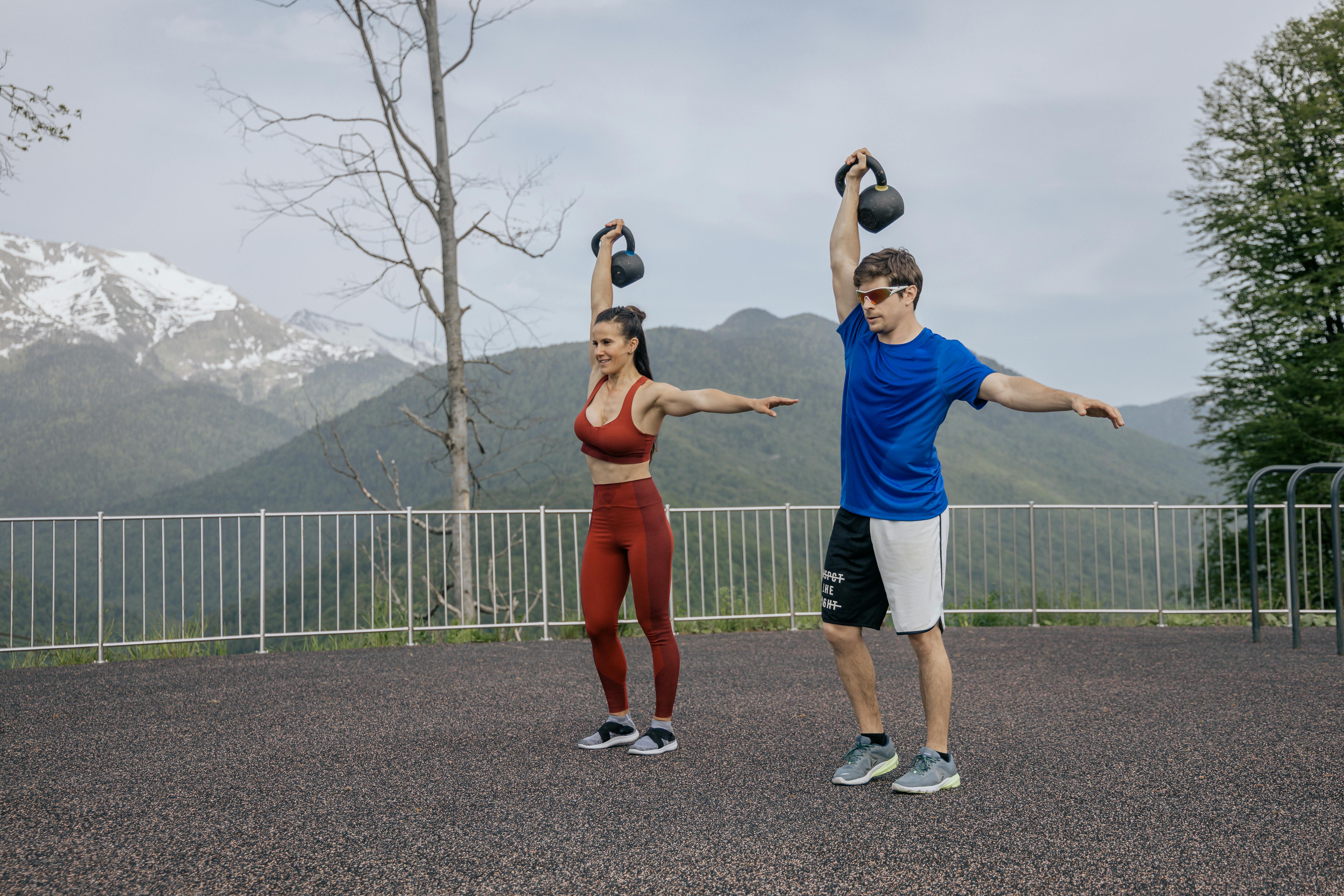
This move combines upper-body power, rotational stability, and grip strength. Start in a plank position with hands on two kettlebells. Perform a power row with one arm. At the top of the row, explosively throw the kettlebell a few inches into the air and catch it immediately, maintaining perfect plank stability. This brief unstable catch-and-control phase forces the core, lats, and stabilizers to fire maximally and eccentrically absorb the force. It’s an advanced test of anti-rotational core power and dynamic, reactive upper-body strength crucial for contact sports and heavy lifting.
35. Lateral Barbell Jumps (Over the Bar)
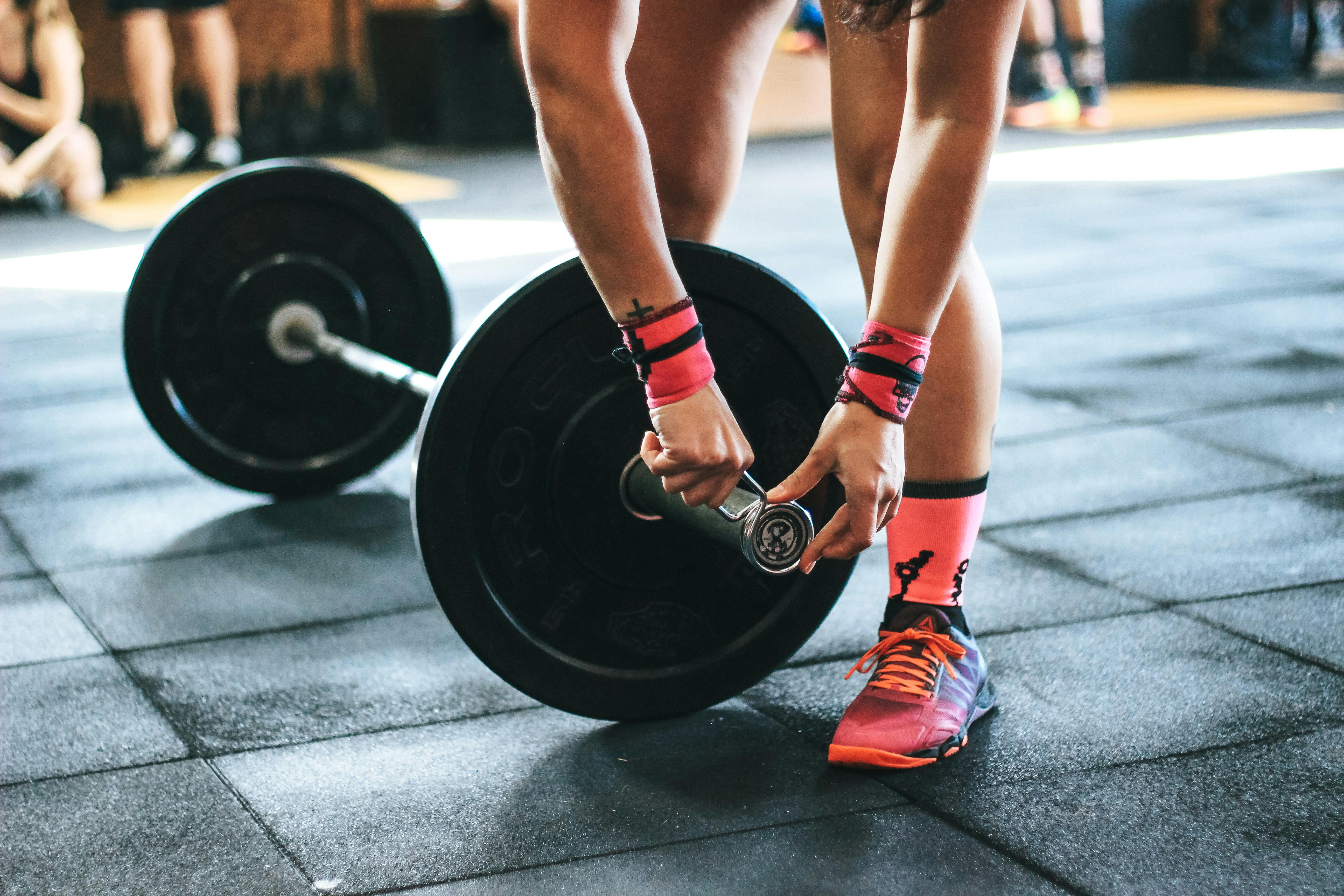
Lateral barbell jumps introduce a fixed, psychological barrier and require extremely rapid force absorption and production in the frontal plane. Stand beside a secured barbell (use light plates or a PVC pipe). Explosively jump sideways over the bar, land softly, and immediately jump back over. This continuous, quick-fire action focuses on the lateral elasticity and explosive drive of the hips, emphasizing quick ground contact time and agility. This is superior training for the change-of-direction power required in court sports like basketball and tennis.
36. Water Bag (Aquabag) Clean & Jerk

The Aquabag or water bag is a specialized tool that introduces maximum hydro-inertia—the shifting, unstable weight of water. Performing a clean and jerk with this tool requires far greater control and stability than with a barbell. The water shifts violently, forcing the deep core, stabilizers, and nervous system to engage maximally at every phase (pull, catch, and overhead drive). This teaches the body to quickly decelerate and reaccelerate an unpredictable load, building raw, integrated power alongside unmatched stability and coordination.
37. Band-Resisted Med Ball Rotational Release
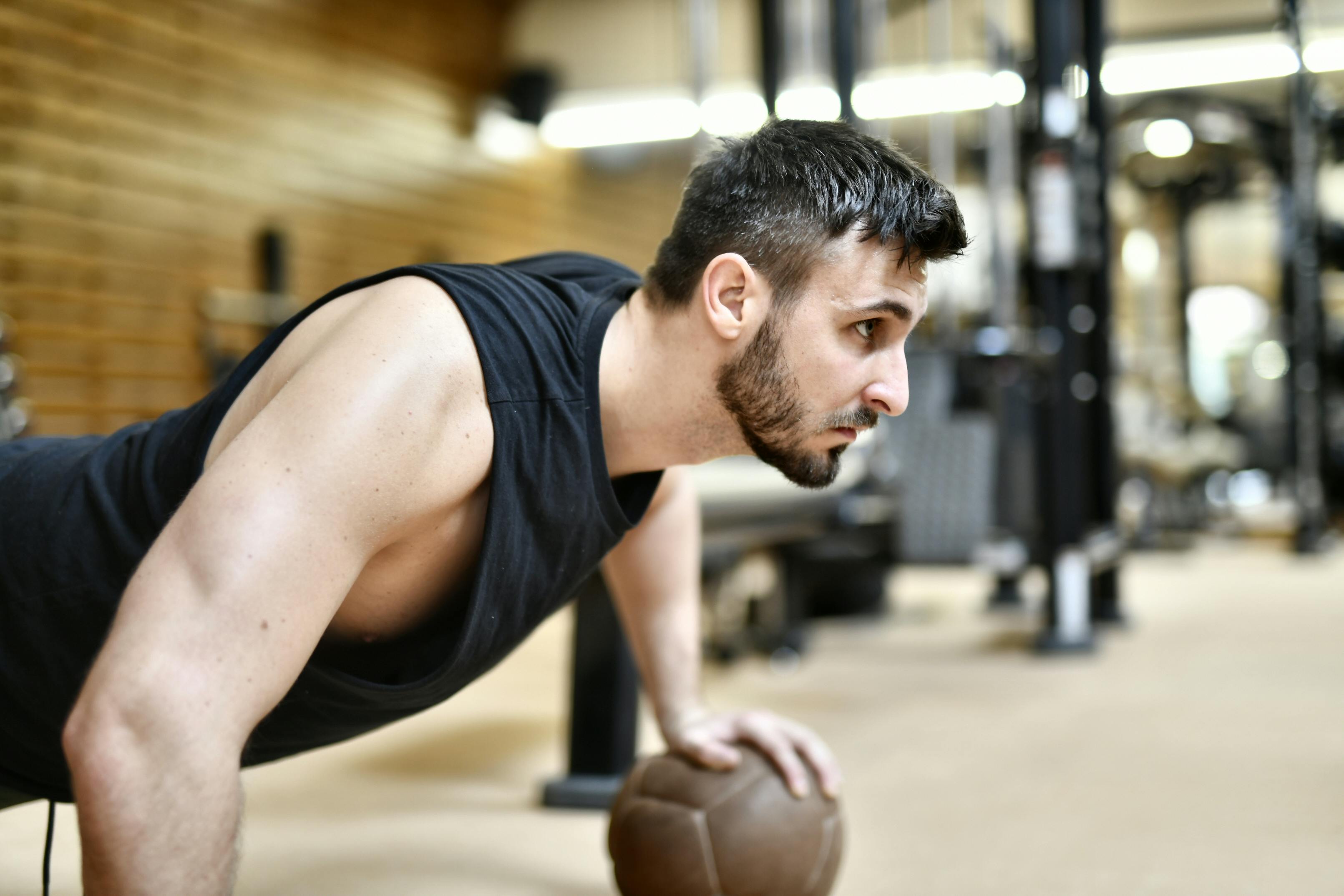
This drill isolates and maximizes the acceleration phase of rotational power. Loop a heavy resistance band around an anchor and hold the end with a medicine ball in both hands. Stand facing the anchor point. Step out to create tension, then explosively rotate away from the anchor, throwing the ball against a wall or to a partner. The band’s constant pull forces your hips, obliques, and transverse abdominals to fire harder through the entire throwing arc, translating directly to maximum rotational velocity in movements like punching, swinging a golf club, or throwing a baseball.
38. Banded Triple Extension Jumps

The Triple Extension (ankles, knees, hips extending simultaneously) is the universal basis of explosive lower-body power. Stand on resistance bands looped over your shoulders (or use a belt). Jump vertically with maximum effort, driving up onto your toes. The constant, heavy tension from the bands forces the muscles—especially the glutes and calves—to generate more force throughout the concentric contraction, improving the overall rate of force development. This targeted resistance is one of the most effective ways to train the specific explosive sequence needed for weightlifting and sprinting.
39. Chain-Resisted Broad Jumps: Speed-Focused Horizontal Power
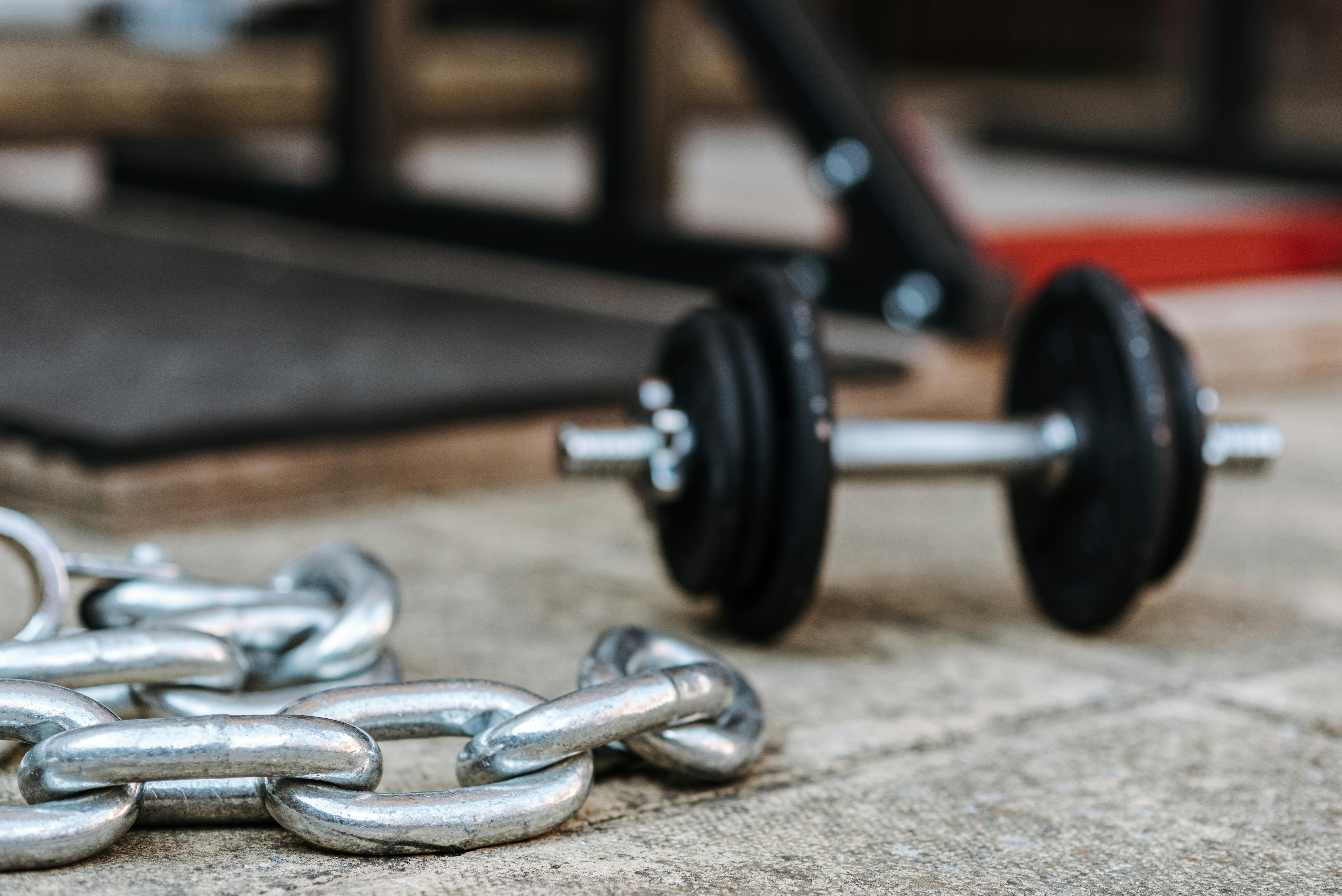
Instead of using a resistance band (which adds pull), use weight chains draped over your shoulders for broad jumps. The chains provide resistance on the concentric (jumping) phase, but the resistance is released upon takeoff. This allows the body to move at a faster speed in the air than is possible with a band or static weight. This drill specifically trains the nervous system for maximum speed and rapid force output during the initial jump, offering a distinct advantage over fixed resistance for boosting horizontal velocity and acceleration.
40. Tire Flips (The Full-Body Primal Power)
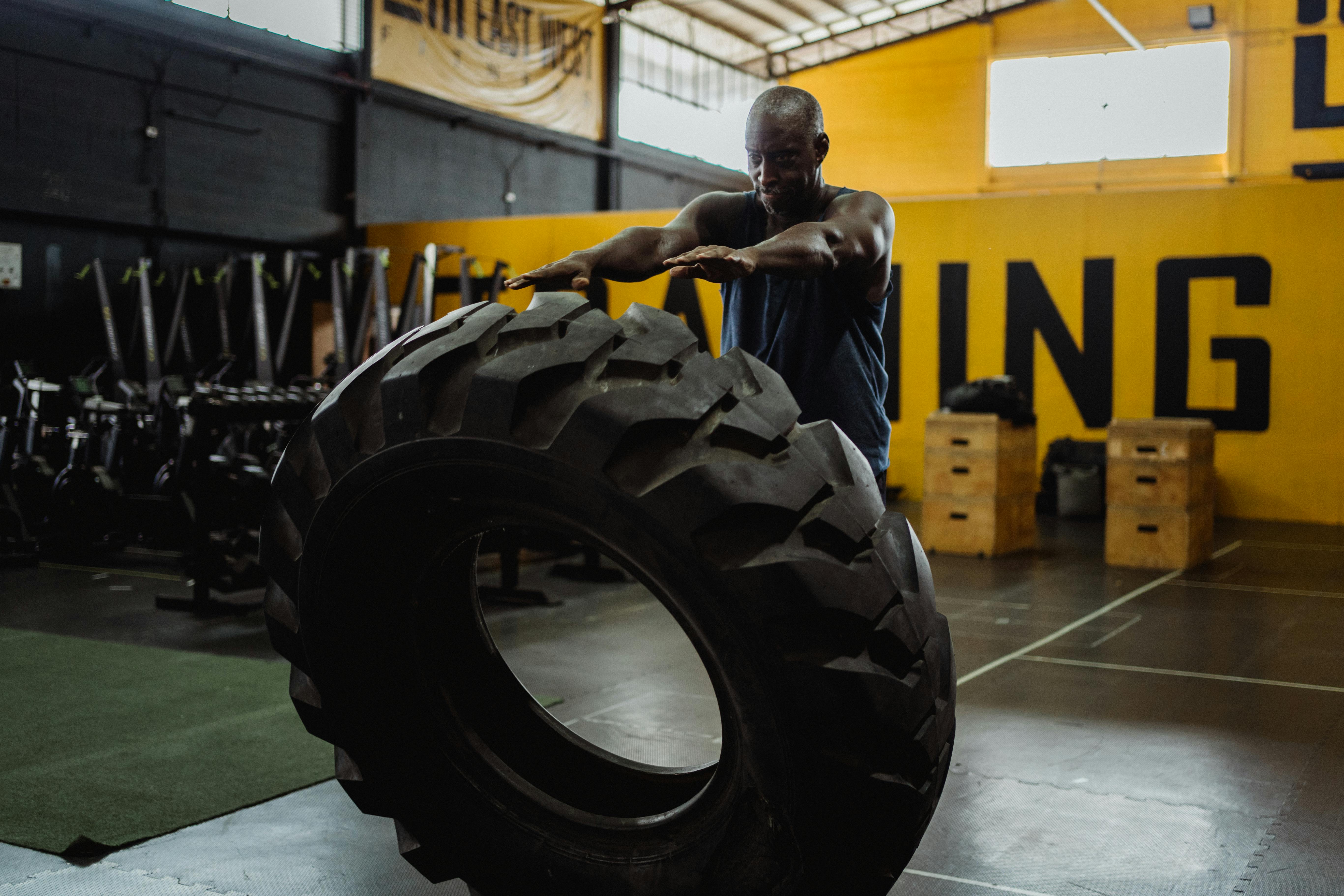
The tire flip is a compound, full-body movement that develops raw, integrated power from the ground up. It forces a seamless transition from a deadlift (strength) into a power shrug (explosiveness) and finishes with a push (speed), engaging the entire posterior chain, core, and shoulders in one fluid, aggressive action. Unlike barbell lifts, the odd shape and grip challenge the stabilizing muscles and grip strength. Flipping a heavy tire is a primal exercise that builds a rugged, resilient power capacity unmatched by linear machine movements.
41. Lateral Hop-to-Sprint: The Transition Power Drill
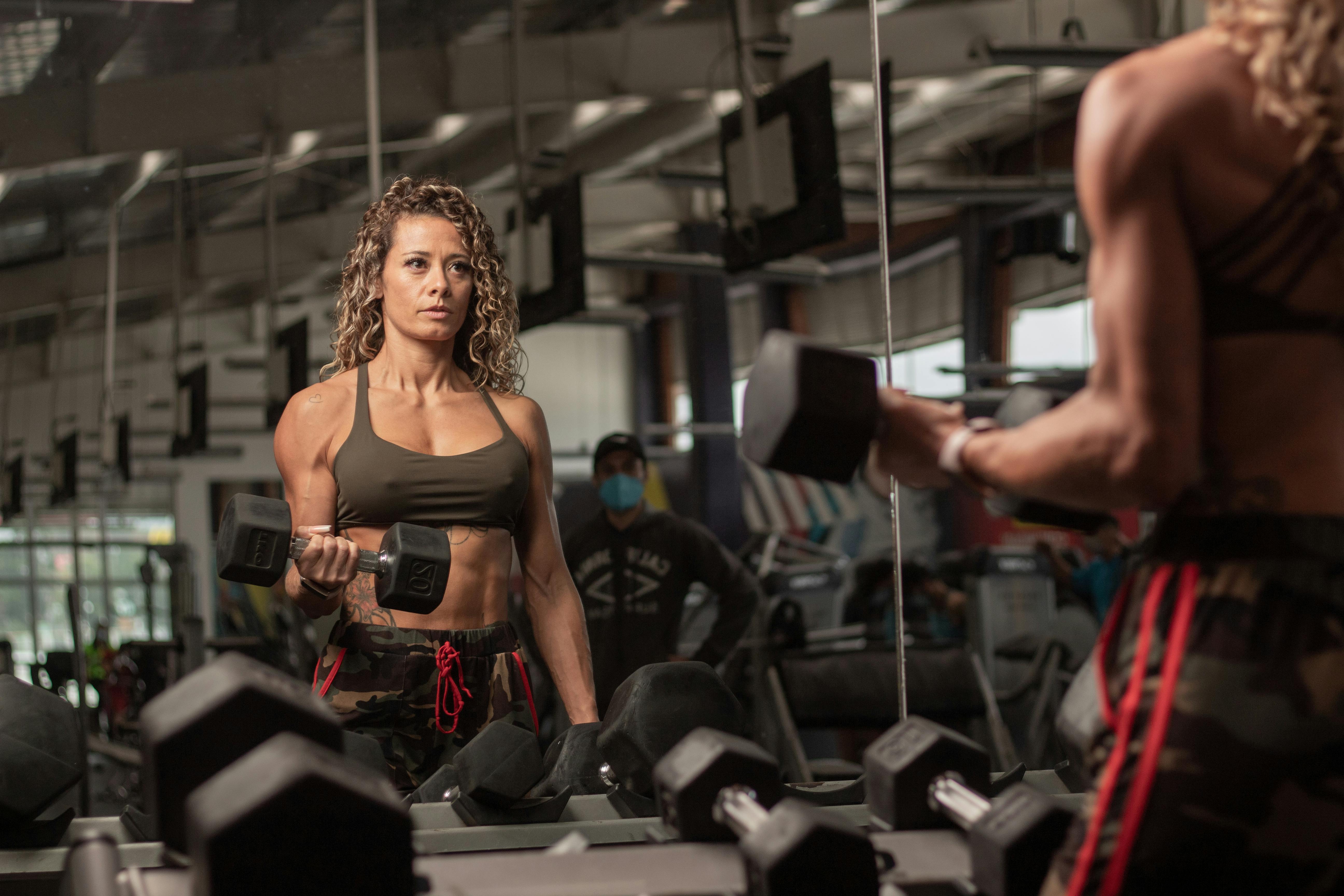
This exercise targets the crucial transition from lateral agility to linear speed. Start with a powerful, single-leg lateral bound (hop), landing softly. Immediately upon stabilizing the landing, explode into a full-speed 5-10 meter sprint forward. The goal is to minimize the ground contact time and maximize the efficiency of force transfer from the lateral plane (hopping) to the sagittal plane (sprinting). This is invaluable for athletes in sports like soccer or football who frequently need to cut and accelerate instantly after a change of direction.
42. Kettlebell Juggling (Catch-and-Throw): Reactive Grip and Forearm Power
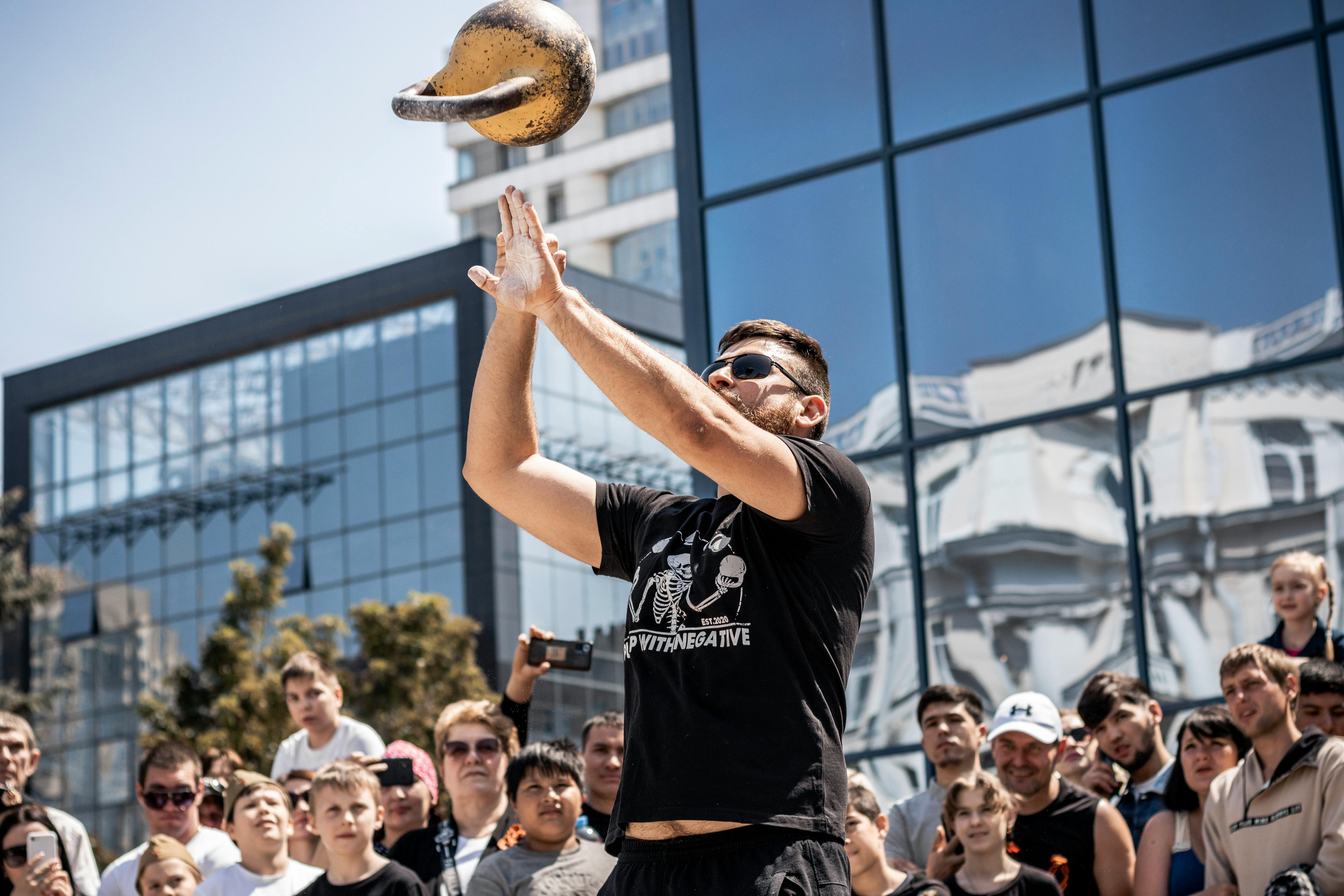
Kettlebell juggling involves tossing and catching a kettlebell in various ways (e.g., throwing it from hand to hand or flipping it). This develops highly reactive grip strength and the ability of the forearms and shoulders to absorb and re-direct force explosively. While it may look like circus skill, the split-second timing required to safely catch an oscillating, falling load trains the nervous system for precise, high-speed coordination and dynamic stabilization far beyond what a static lift provides. It is an advanced drill for enhancing total-body dexterity and grip endurance.
43. Reverse Hyper-Jump (Eccentric Overload)

The Reverse Hyper-Jump is a specialized drill for training eccentric strength and power in the hamstrings and glutes. Secure your feet under a fixed object (or use a GHD machine). Slowly lower your torso forward (the eccentric phase) until your hips are fully extended. Then, without letting your hands touch the ground, forcefully reverse the motion to return to the starting position and explode vertically into a jump. The rapid, powerful reversal from the loaded eccentric phase trains the posterior chain to fire maximally, increasing the speed and force of hip extension.
44. Weighted Surf Pops: Reactive Core and Lower-Body Integration
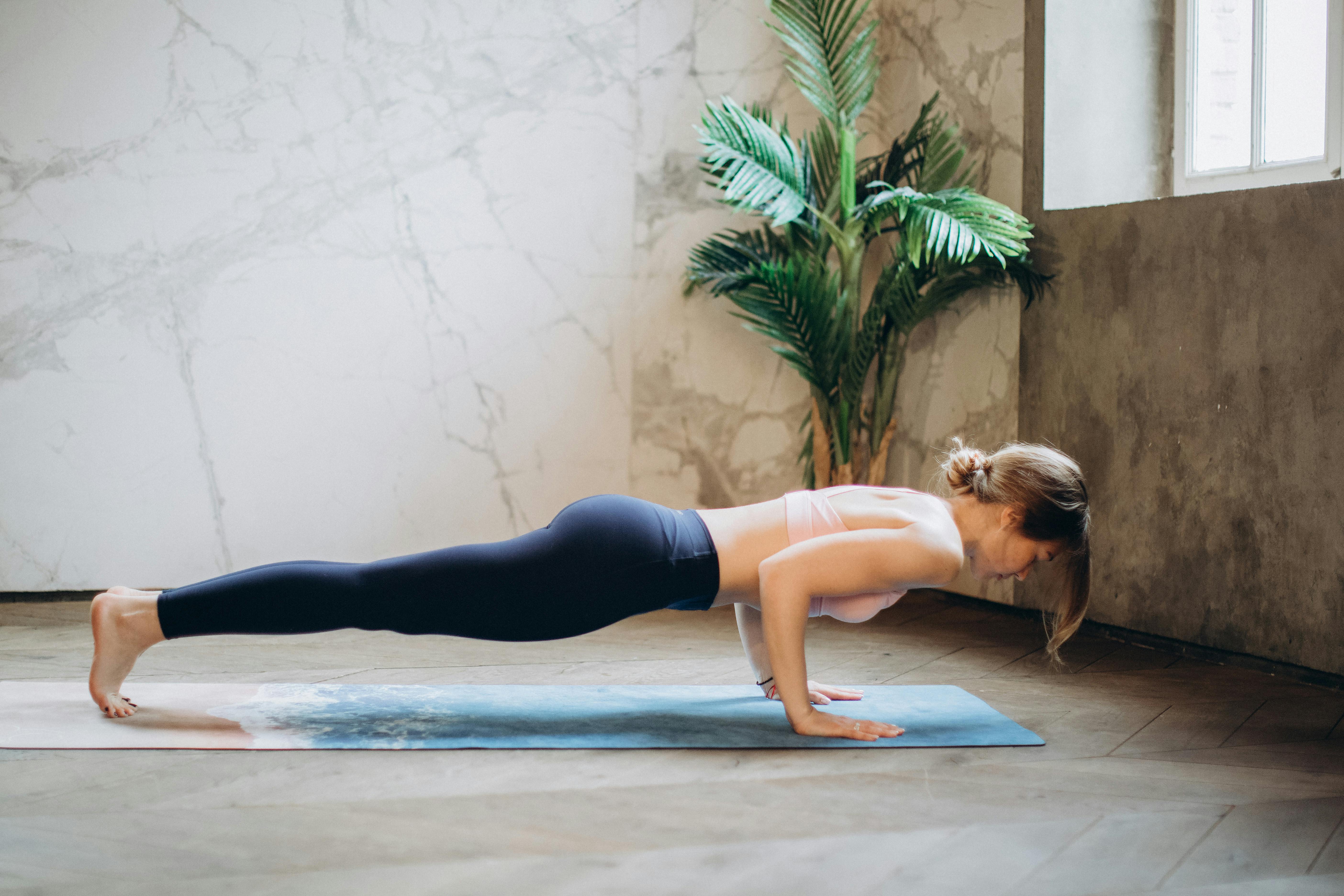
While the previous moves focus on standard jumping or pushing, the Weighted Surf Pop targets the unique explosive requirement of moving from a horizontal, prone position to a specialized split-stance in one fraction of a second. Wear a light-to-moderate weighted vest to increase the demand on the kinetic chain. Start lying flat on your stomach, hands by your ribs. In one violent, coordinated burst, push through the ground and snap your hips under your torso, landing in a low, athletic surf-inspired stance. This movement trains the specific rate of force development required to transition between ground-based power and vertical stability. Because you aren't using the momentum of a standing start, your core, hip flexors, and shoulders must generate all the lift from a "dead stop," improving proprioception and functional agility that translates to contact sports and defensive movements.
45. Compensatory Acceleration Training (CAT) for Maximal Motor Unit Recruitment
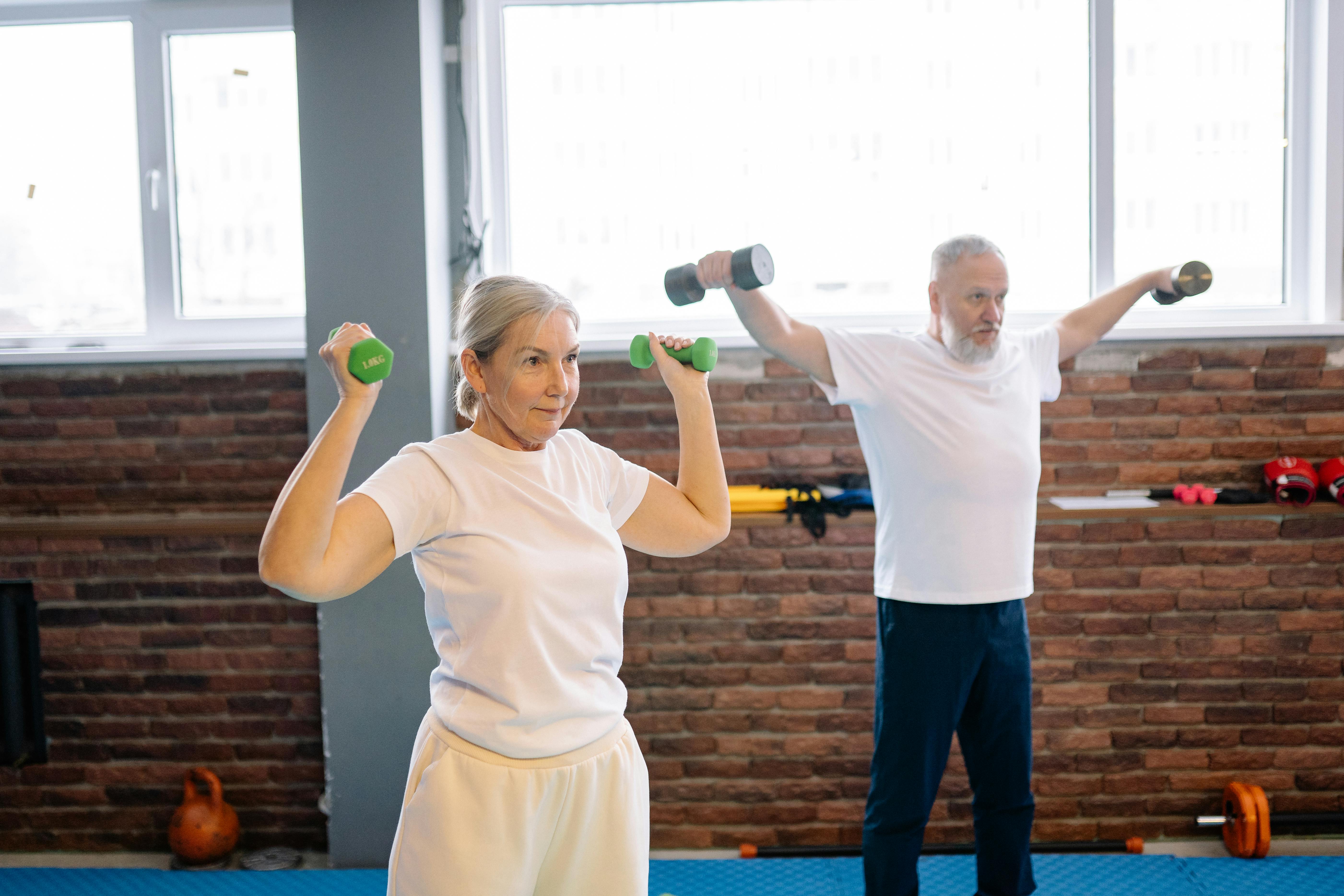
Compensatory Acceleration Training, or CAT, is a technique used by powerlifters to maximize the rate of force development during non-maximal lifts. The concept is simple: during the concentric (lifting) phase of a sub-maximal weight (e.g., 70% of your 1RM), you consciously try to accelerate the bar as fast as physically possible throughout the entire range of motion, even past the sticking point. This focus on maximal intent forces the nervous system to recruit a higher percentage of fast-twitch muscle fibers (high-threshold motor units) than would normally be engaged for that weight. By training the body to move fast with a load, you increase the nervous system's efficiency, which directly translates to greater explosive power in all other activities without the high joint stress of maximal lifting.
46. Kettlebell Deadlift Jumps: The Hinge-to-Explode Drill
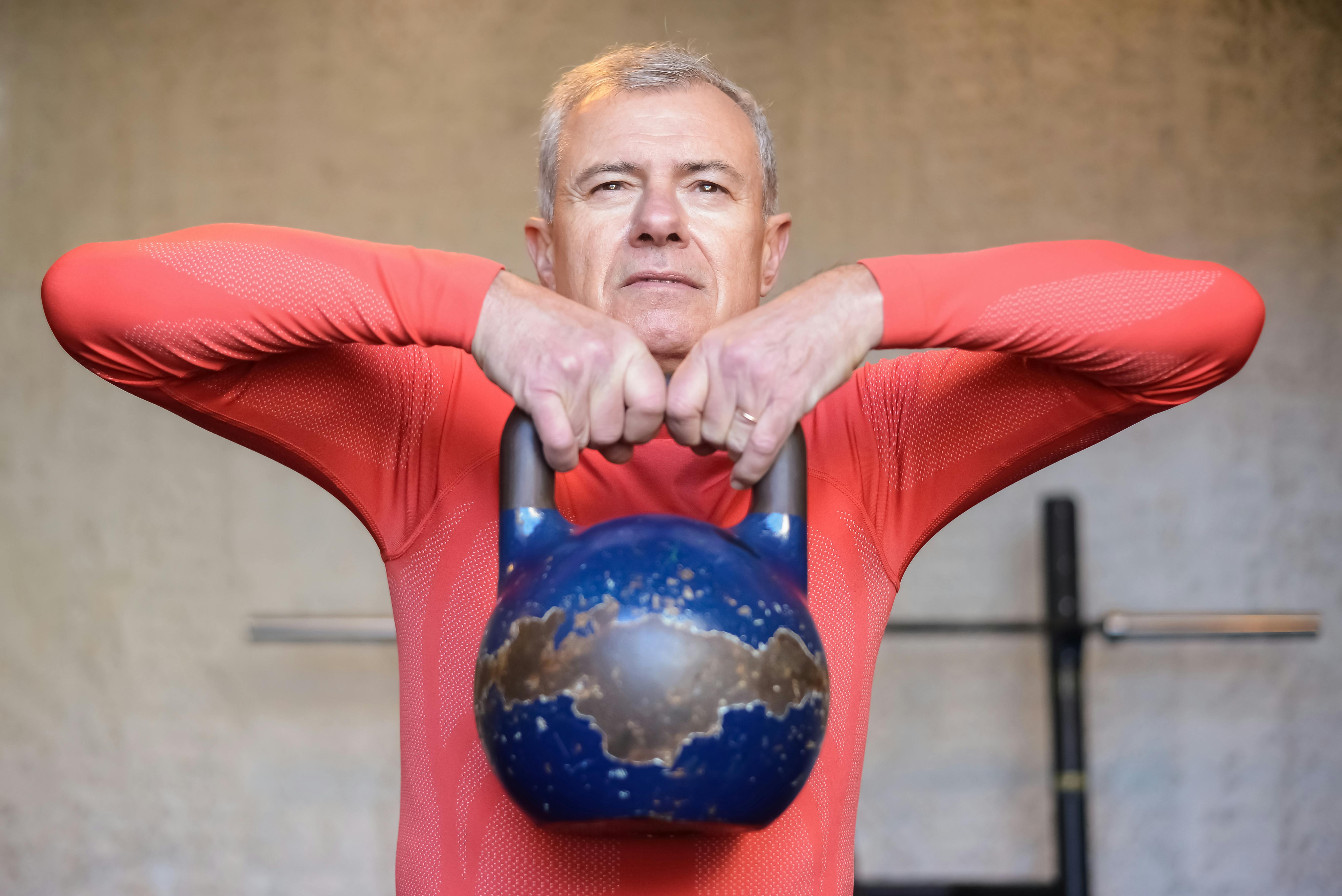
The Kettlebell Deadlift Jump is a unique power movement that specifically trains the explosive transition from a clean hinge (hip dominance) to a full vertical drive. Hold one or two kettlebells and perform a perfect hip hinge (deadlift position). Instead of standing up, explosively jump straight up with the bells, driving your hips forward and shrugging at the peak. By loading the movement and forcing an explosive, vertical hip extension from the hinge, you train the glutes and hamstrings to fire maximally and rapidly—the foundational mechanism for all sprinting, jumping, and striking power. This is highly beneficial because it increases force production without the technical complexity of the Olympic lifts, directly translating to enhanced horizontal and vertical explosiveness.
Integrating Power Training for Lifelong Fitness

Power training not only fortifies the body against age-related decline but also enhances overall physical performance and quality of life. As you embark on this fitness journey, remember that consistency and progression are key. Embrace the power of power training, and cultivate a body that is resilient, dynamic, and built to last.